A Summary of Recent Research Papers on 47, XYY (XYY)
XYY Syndrome confirmed by a blood test is a rare genetic disorder. Both the chromosome aneuploidy disorders, 47,XYY (XYY) and 47,XXY (Klinefelter syndrome, KS) only affects males, and although both disorders are relatively common, they are under-diagnosed, (Ross et al, 2010). Some of the physical aspects of XYY syndrome include tall stature and flat feet as well as neurological, cognitive, and behavioural phenotypes (Ross et al, 2010). Bardsley, et al., (2013) points out that although 1:1000 boys have the karyotype 47, XYY (XYY), there is a lack of information about this disorder, and approximately 85% or more of males with XYY are never diagnosed. Recent studies typically describe boys diagnosed for clinical reasons in the first decade of life because of developmental delays, behavioural issues and tall stature. Language delays have been recognised in various studies of XYY (Bardsley, et al 2013, Ross, et al 2012, Ross, et al 2015), Tartaglia et al 2015).
Ross et al (2012), found that the XYY boys studied had verbal learning disabilities, attention deficits, delayed speech development requiring speech therapy, an increased risk of impulsivity and difficulties related to behavioural dysregulation. In both this research and Bardsley, et al (2013), research found nearly all the XYY boys studied needed speech and/or reading therapy, most of them also needed occupational and /or physical therapy with half of them receiving special education services at school. Bardsley, et al (2013), in their research found even higher percentages of XYY boys needed these services. Ross et al (2012), research also found that boys with XYY have an increased risk for features consistent with Autism Spectrum Disorders (ASD). These include features that overlap considerably with ASD, such as language disorders, other social deficits, and anxiety/withdrawal symptoms.
Various research on XYY shows that boys with this disorder can have varying degrees of learning difficulties. Previous research shows that Verbal IQ is limited by delayed speech development and it is a common factor with XYY boys, that they need speech therapy and extra help in the school environment, (Ross et al, 2010).
In a study contrasting the behavioural and social phenotypes included a screen for autistic behaviours in boys with 47,XYY and KS it was found that a subset of the XYY and KS groups had behavioural difficulties that were more severe in the XYY group. The researchers recommended that boys diagnosed with XYY or KS should receive a comprehensive psycho-educational evaluation. They should also be screened for learning disabilities, attention-deficit/hyperactivity disorder, and ASD (Ross et al 2012).
In a comparison study that included a control group, a research group found boys with XYY Syndrome as with KS have varying levels of language impairment at both simple and complex levels. Both the XYY and the KS boys performed less well, on average than the control group in tests of general cognitive ability, language, achievement, verbal memory, and in some aspects of attention and motor function. They found that there is some overlap in the cognitive phenotypes in these two disorders, especially in language dysfunction. The researchers found that the boys with XYY had more severe and pervasive language impairment and that the XYY boys and were less likely than the KS or the control group to complete the full evaluation because of a tendency for less cooperation for the evaluation. General cognitive profiles of both XYY boys and the KS boys showed decreased verbal and non-verbal abilities (Ross et al 2010).
Note: Non-completion of tasks seems to be a common theme with XYY boys and indicates that shorter assessments with breaks or alternative assessments would work better.
In language and achievement delayed speech, impaired word retrieval, speed of linguistic processing, expressive and receptive capabilities and processing of narration has been described in previous research in both XYY and KS groups. However, in Ross et al, (2010) research they pointed out that the XYY group appears to have a more severe and pervasive language impairment that the KS group. The researchers also found varying levels of complexity in oral and written language. The researchers noted a greater impairment in the XYY group, particularly for higher-level metalinguistics abilities. This was demonstrated by a significant difficulty in understanding figurative language, interpreting ambiguities in language, as well as in oral expression and verbal memory, (Ross et al, 2010).
This language impairment appears to have important academic implications. Boys with XYY produced lower achievement in reading and spelling, compared to both KS and the control group. The researchers’ findings are similar to previous studies in XYY and report school difficulties out of proportion to what would be expected based on IQ.
Often these boys have difficulty following school curricula and need educational support services in reading and writing. This research points out that XYY boys are at increased risk for having delayed motor milestones and impaired fine and gross motor function, coordination and tone. (Ross et al 2010).
Ross et al (2010) points out that the research on XYY and KS have important neuro-cognitive and educational implications. From the educational side, the difficulty in complex language processing and impaired attention as well as motor function identified in XYY and KS populations may be missed. This can be a challenge to educators. Further, Ross et al 2010 pointed out that it is critical for boys with both these disorders to receive appropriate education interventions that target their specific learning challenges, (Ross et al 2010), (Ross et al 2012).
The eXtraordinarY Kids Clinic was established in Colorado USA to provide comprehensive and experience care for children and adolescents with sex chromosome aneuploidies (SCAs) of which 47, XYY is included. The researchers, Tartaglia et al (2015) found that the rates of SCA diagnoses in infants and children are increasing in America and this clinic provides specialised interdisciplinary care to address associated risks. SCA children are born with an atypical number of X and/or Y chromosomes, and present a range of medical, developmental, educational, behavioural and psychological concerns. Tartaglia et al (2012) points out that SCAs are the most common chromosomal abnormalities in humans and are estimated to occur in 1:400 individuals. The addition of extra X and/or Y chromosomes leads to neuro-developmental differences, with increased risk for developmental delays, language-based learning, cognitive impairments, executive dysfunction, and behavioural and psychological disorders. Searle (2016) points out that sometimes children with the same genotype will show similar problems. However, even children with the same genotype can differ in some or even nearly all of their problems.
Importantly Tartaglia et al (2012) points out that there is there is significant variability in the presence and severity of associated neuro-developmental and psychological problems among individuals with SCA. However, the researchers commonly encountered patterns of weaknesses in language, verbal cognition, reading and executive function (EF). In the trisomy conditions (XXY, XYY and XXX) the majority of studies reported cognitive scores within the low average to average range. However, cognitive scores are often lower that expected for family history, and up to 85% of SCAs require special education supports for learning disabilities. In all SCA conditions, there are additional increased risks for emotional disorders including anxiety, depression, and other mood disorders, as well as medical problems such as seizure, which can make the neuropsychological and behavioural phenotypes even more complex.
Tartaglia et al (2015) found a lack of expertise with SCA among medical providers, psychologists, developmental paediatricians, and other specialist/therapists involved in the care of children with SCAs. As a result, parents/caregivers often do not have access to experienced providers who can incorporate all different aspects of SCA in to understanding how the child’s disorder affects their health, behaviour, learning, and overall daily functioning. This requires caregivers to ‘piece together’ evaluations, as well as to educate the professionals working with children about SCA. Tartaglia et al (2015) reported that there was a better understanding of SCAs but more is needed to educate healthcare providers, psychologists, therapists, and educators nationally about SCA conditions so that families receive better information after receiving a diagnosis.
Note: Parents and caregivers with XYY boys have found this a typical experience. (XYY Facebook feedback, 2016).
In another study by Tartaglia, et al (2012) looking at 4 types of SCA (XXY, XYY XXX and XXYY) they described attention problems, hyperactivity and impulsivity as behavioural features associated with SCA and found that children and adolescents with SCA are at an increased risk for ADHD symptoms.
Note: I found that most of the research on XYY comes out of the USA as the references below show. I only looked at current research to find a better solution to understanding XYY Syndrome. The eXtraordinarY Kids Clinic in the USA multi-disciplinary specialist approach are developing a better understanding of how the child’s SCA disorder affects their health, behaviour, learning, and overall daily functioning. Unfortunately, there is no such clinic in Australia.
Notes and summary – McArdle, A., MURP, BSc. (Env).
References:
Ross, J.L. Zeger, P.D., Kushner, H., Zinn, A.R., and Roeltgen, D.P., An extra X OR T chromosome: Contrasting the cognitive and motor phenotypes in childhood in boys with 47, XYY syndrome OR 47, XXY Klinefelter syndrome Dev Disabil Res Rev. 15(4): 309-317, doi:10.1002/3344.85. [PubMed:2010].
Ross, J.L., Roeltgen, D.P., Kushner, H, Zinn, A.R., Reiss, A., Bardsley, M.Z., McCauley, E., Tartaglia, N., Behavioral and Social Phenotypes I Boys with 47,XYY Syndrome or 47,XXY Klinefelter Syndrome, Pediatrics, 2012 Apr; 129(4): 869-778. http://www.ncbl.nim.nih.gov/pmc/articles/ PMC3356148/
Tartaglia, N., Howell, S., Wilson, R., Janusz, J., Boada, R., Martin, S., Frazier, J.B. Pfeiffer, M., Regan, Karen, McSwegin, S., Zeitler, P., The eXtraordinarY Kids Clinic: an interdisciplinary model of care for children and adolescents with sex chromosome aneuploidy, Journal of Multidisciplinary Healthcare August 2015:8 323-334.
Tartaglia, N.R., Ayari, N., Hutaff-Lee, C., Boada, R., Attention-Deficit Hyperactivity Disorder Symptoms in Children and Adolescents with Sex Chromosome Aneuploidy: XXY, XXX, XYY, and XXYY, Journal of developmental and behavioural pediatrics: JDBP February 2012.
Bardsley, Z., Kowal, K., Levy C., Gosek, A., Ayart, N., Tartaglia, N., Lahlou, N., Winder, B., Grimes, S., Ross, J.l., 47, XYY Syndrome: Clinical Phenotype and Timing of Ascertainment. Journal of Pediatrics. 2013:vol 163, No.4, www.Jpeds.com
Searle, B., Chromosomes and Rare Chromosome Disorders in General, Unique The Rare Chromosome Disorder Support Group 1-8. http://www.rarechromo.org/html/ChromosomesAndDisorders.asp retrieved 28/5/2016.
Some definitions follow – but for further clarification search further on the internet.
Syndrome – Sometimes a particular chromosome disorder will give a similar pattern of problems. If enough children are born with the similar pattern, it is called a Syndrome.
Chromosome – Searle, B, (2016), explains that apart from the mother’s egg cells or the father’s sperm cells, every cell in the human body normally contains 23 pairs of chromosomes, with 46 chromosomes in total in each cell. The first 22 pairs of chromosomes are called the Autosomes and are numbered from 1 to 22 according to their length, starting with no 1 as the longest. The 23rd pair of chromosomes are called the Sex Chromosomes. Sex chromosomes are labelled X or Y. Males normally have one copy of the X chromosome and one copy of the Y chromosome in each cell, while females normally have two copies of the X chromosome and none of the Y chromosome.
Rare Chromosome Disorders (RCD) – Searle, B, (2016) explains RCDs include extra, missing or re-arranged chromosome material but do not include the more common chromosome conditions such as Down’s Syndrome. The amount of chromosome material duplicated, missing or re-arranged can vary a great deal. This means that it may be difficult to identify two people who have exactly the same chromosome disorder. The clinical problems of those affected can also vary enormously even when the chromosome diagnoses are similar.
Aneuploidy – is the presence of an abnormal number of chromosomes in a cell eg. 45 or 47 chromosomes.
Genotype – is a description of a person’s chromosome make-up.
Phenotypes – is the observable physical characteristics of a person’s genotype.
Karyotype – gives the bigger picture seen under a light microscope
Behaviour Dysregulation – behavioural impairment in the regulation of a metabolic, physiological, or psychological process
Cognitive Impairments – describes certain limitations in skills such as communication, self-help, and social skills. These limitations will cause a child to learn and develop at a slower rate.
Executive Dysfunction – is a disruption to the efficiency of the executive function, which is a group of cognitive processes that regulate, control and manage other processes.
Neurodevelopmental Disorders – impairment and development of the brain that affects emotion, learning ability, self-control and memory and unfolds as the individual grows.
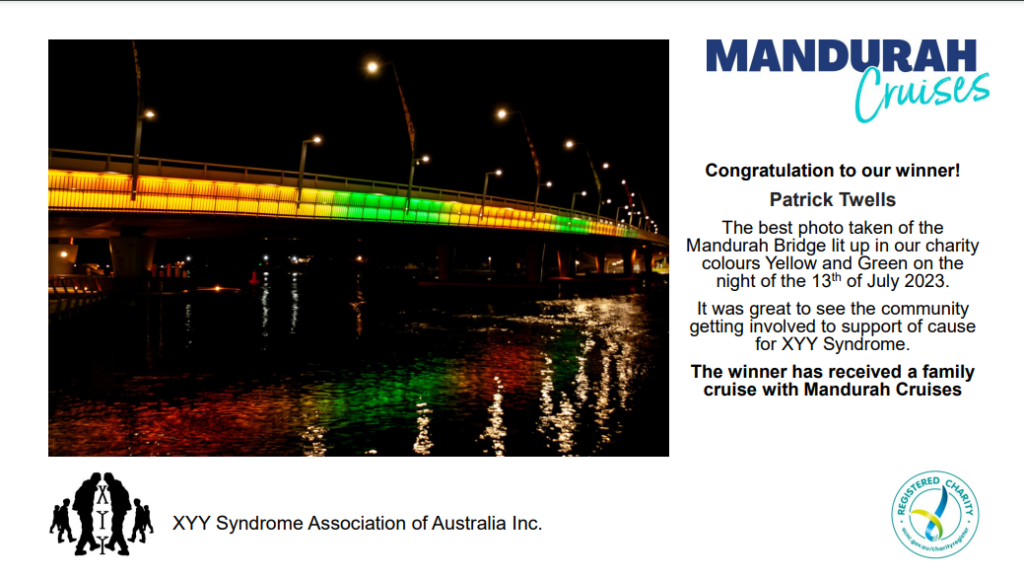
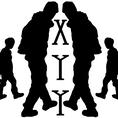
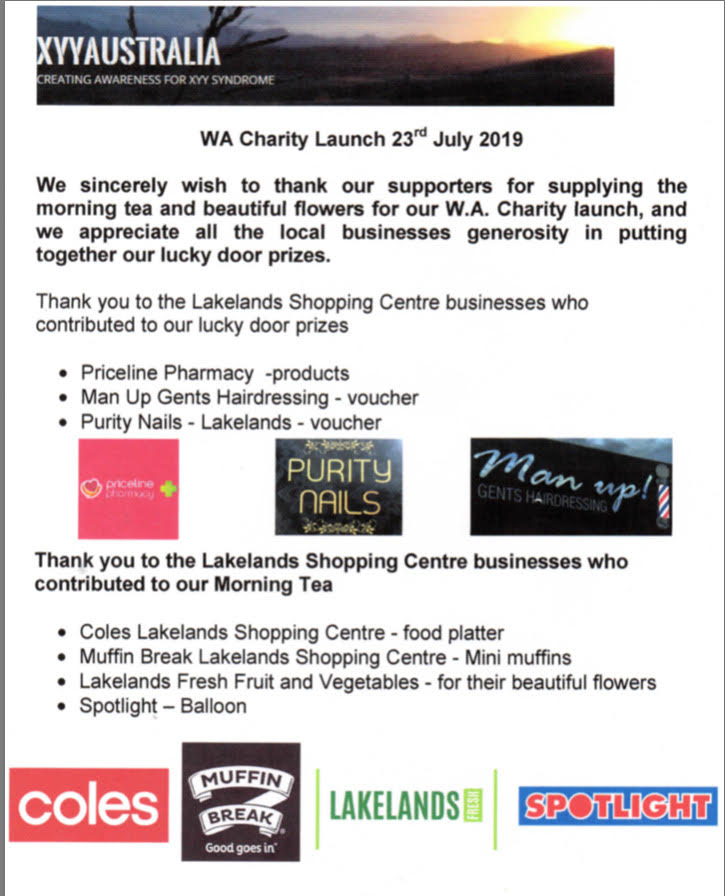
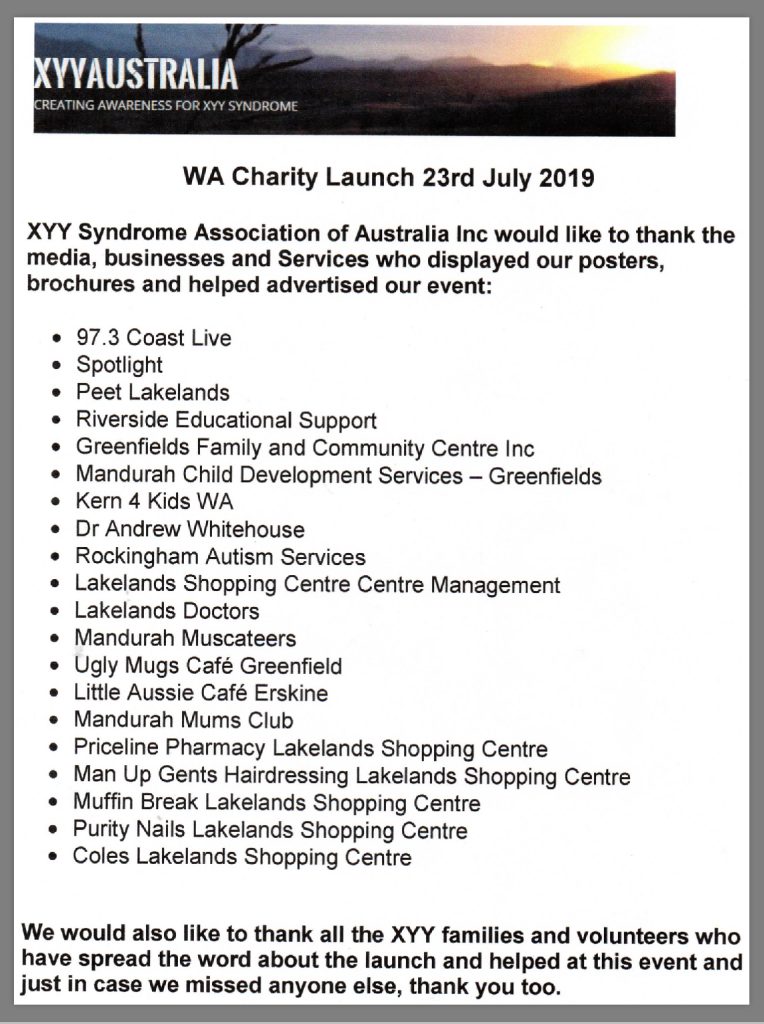
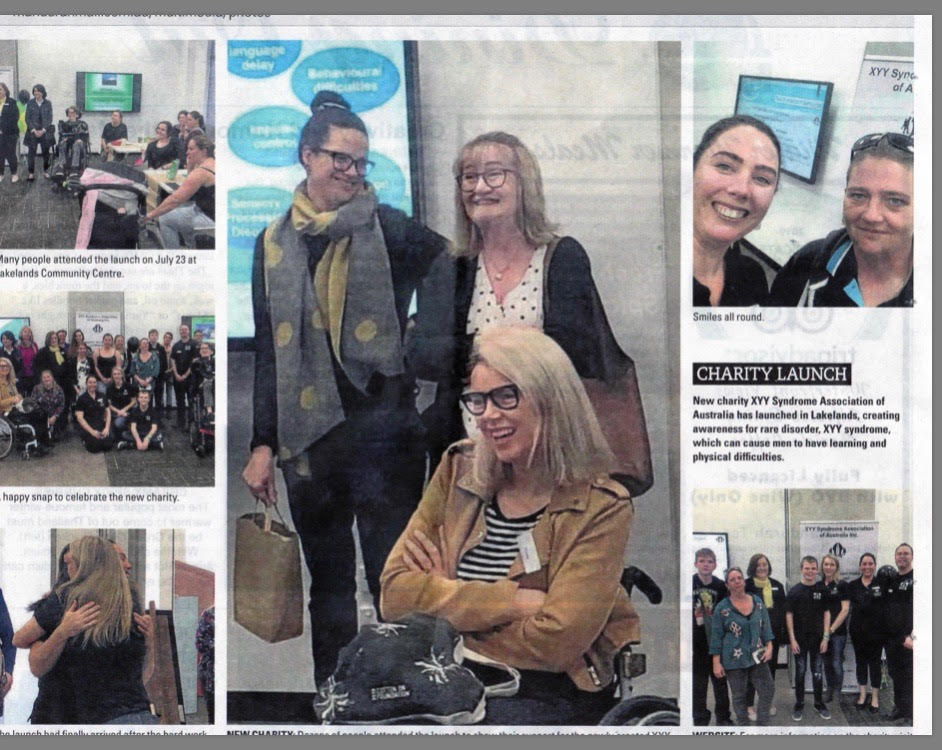
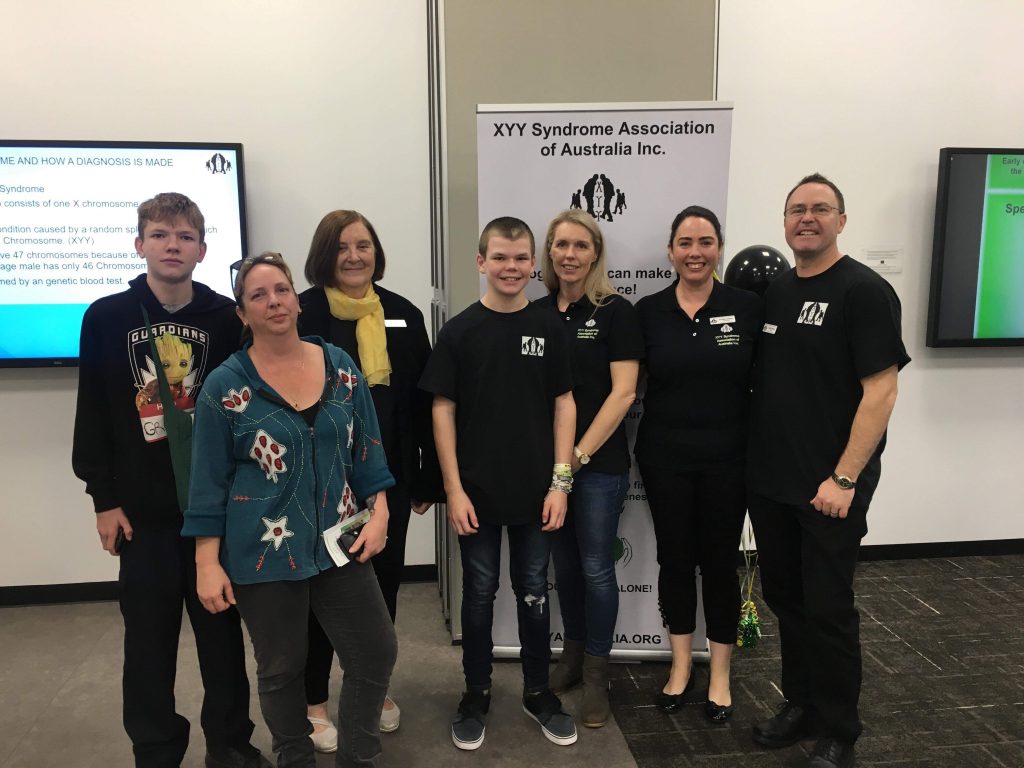
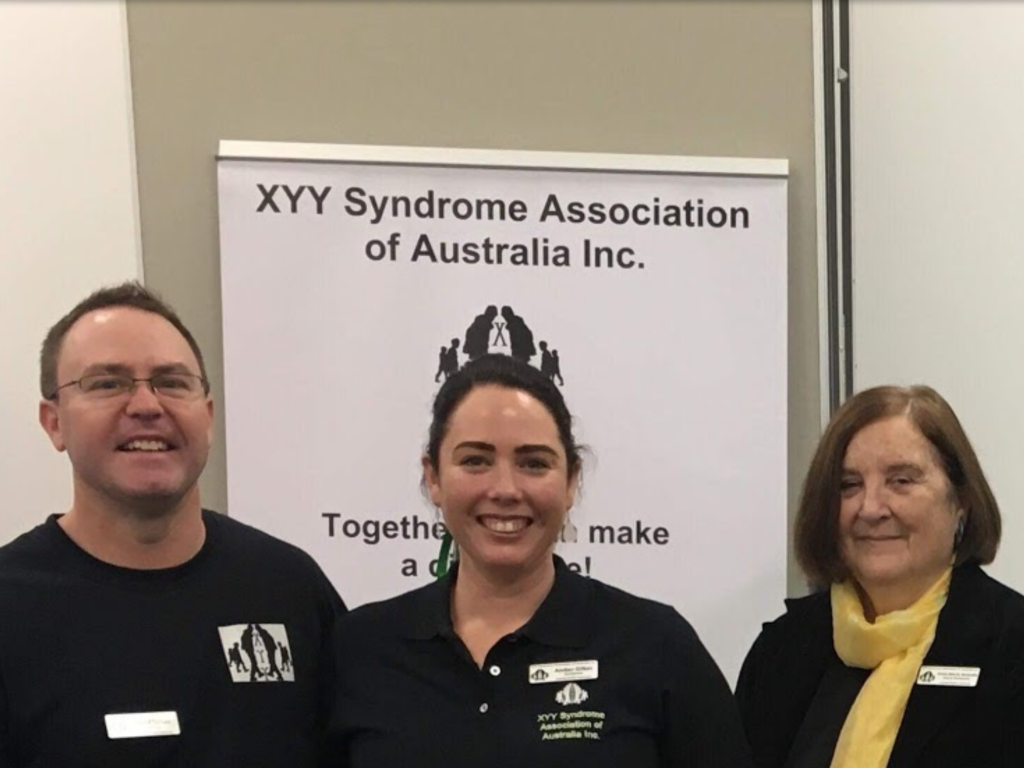
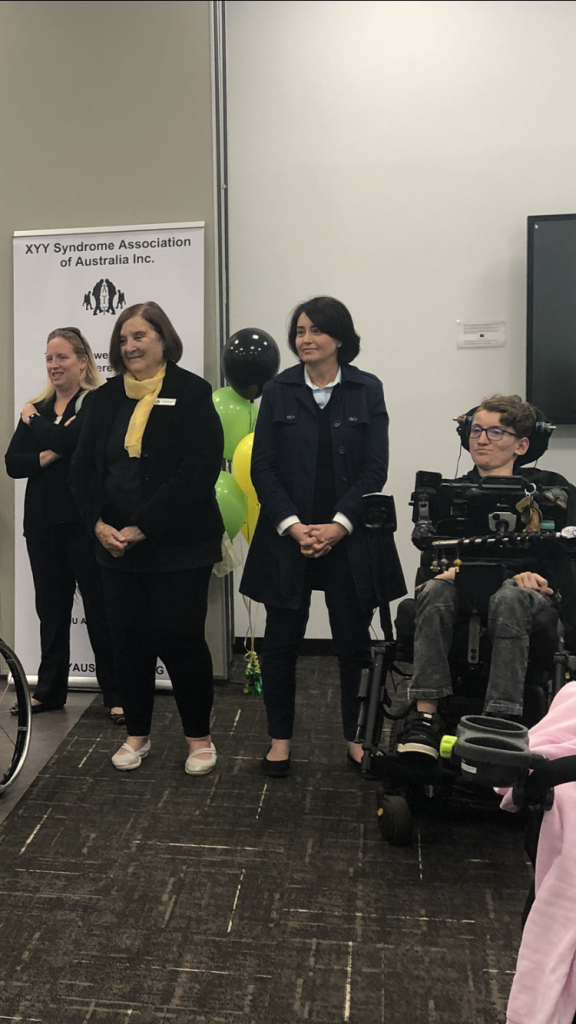
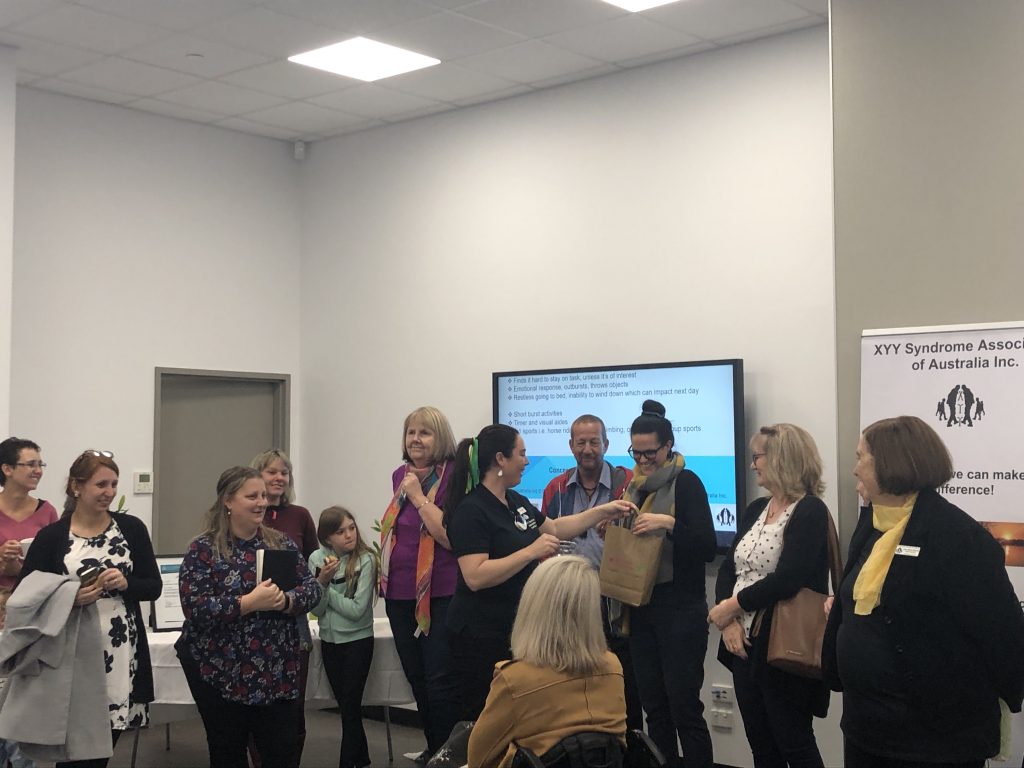
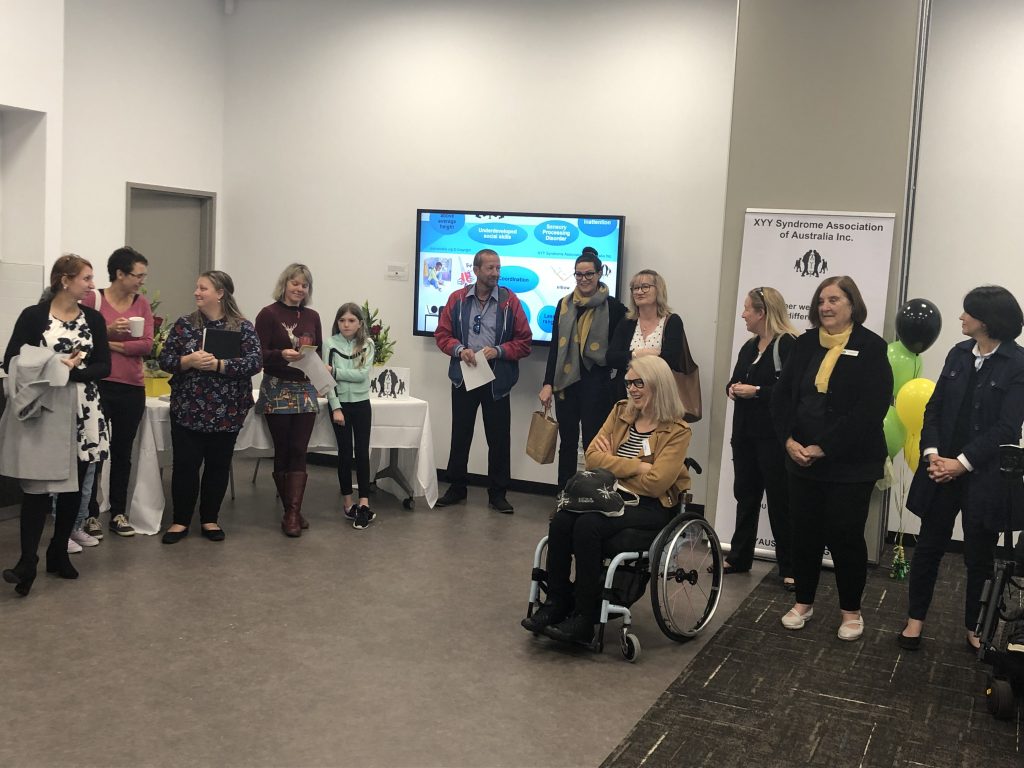
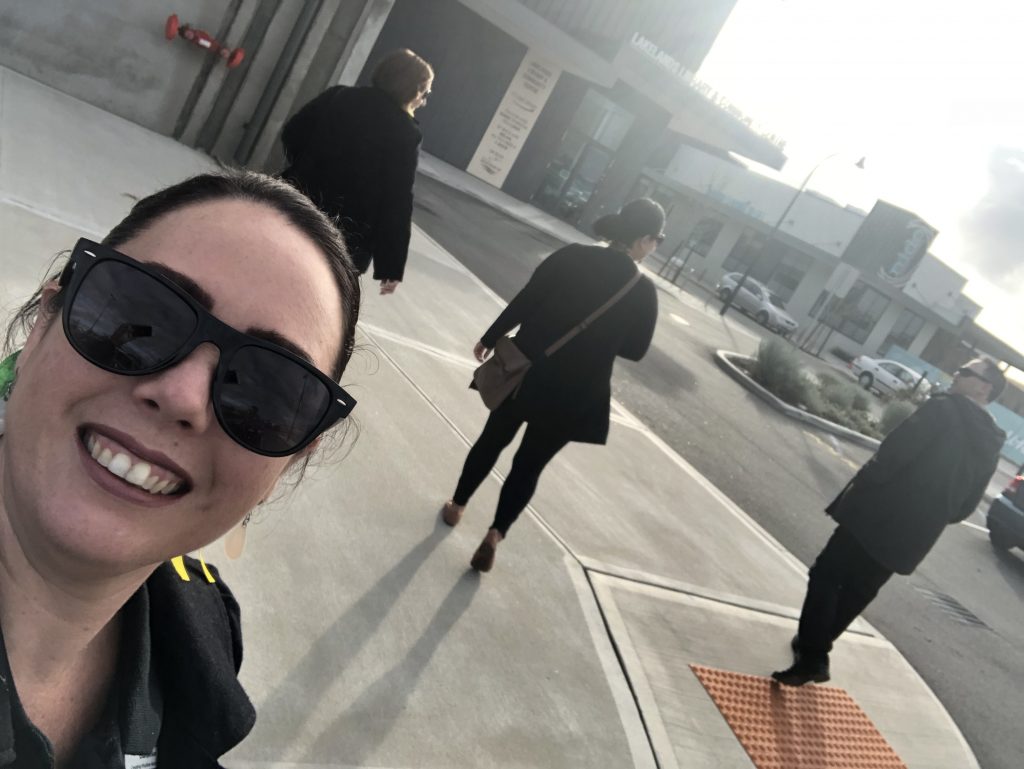
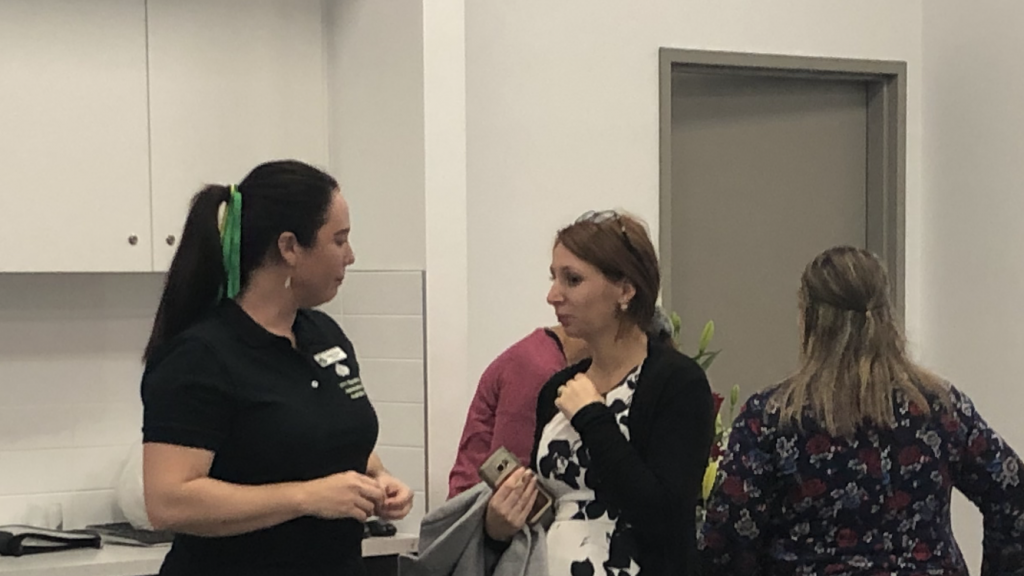
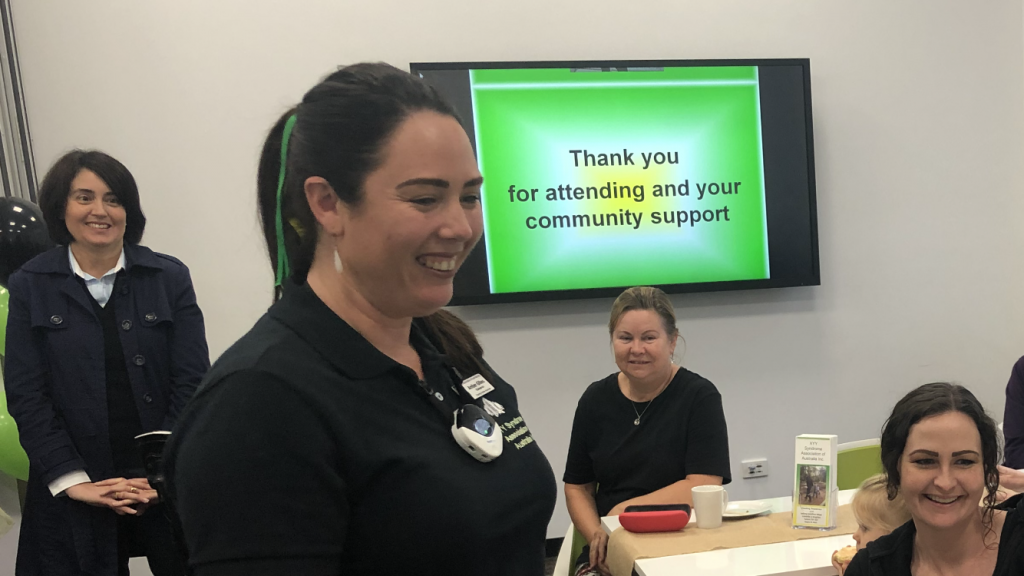
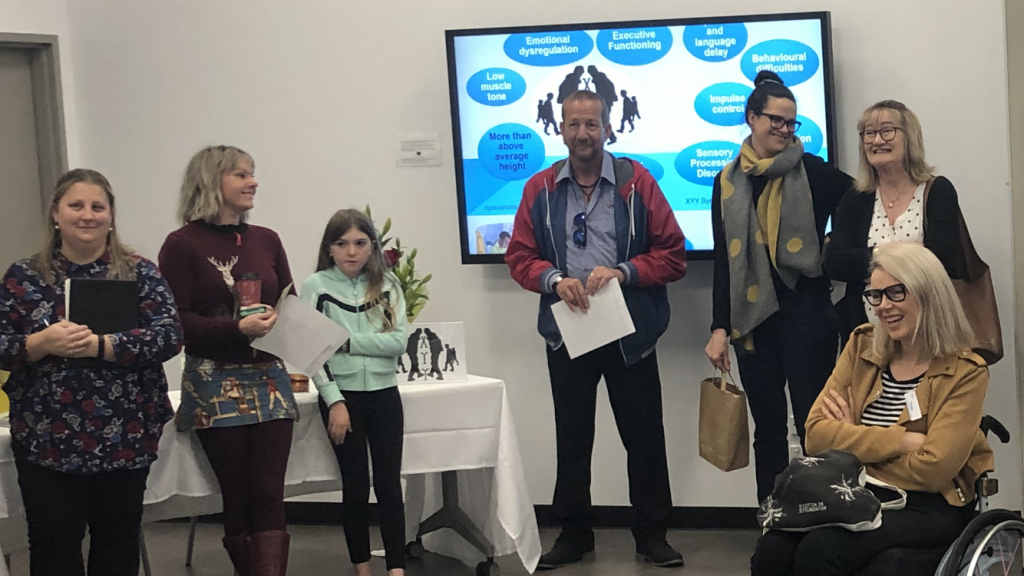
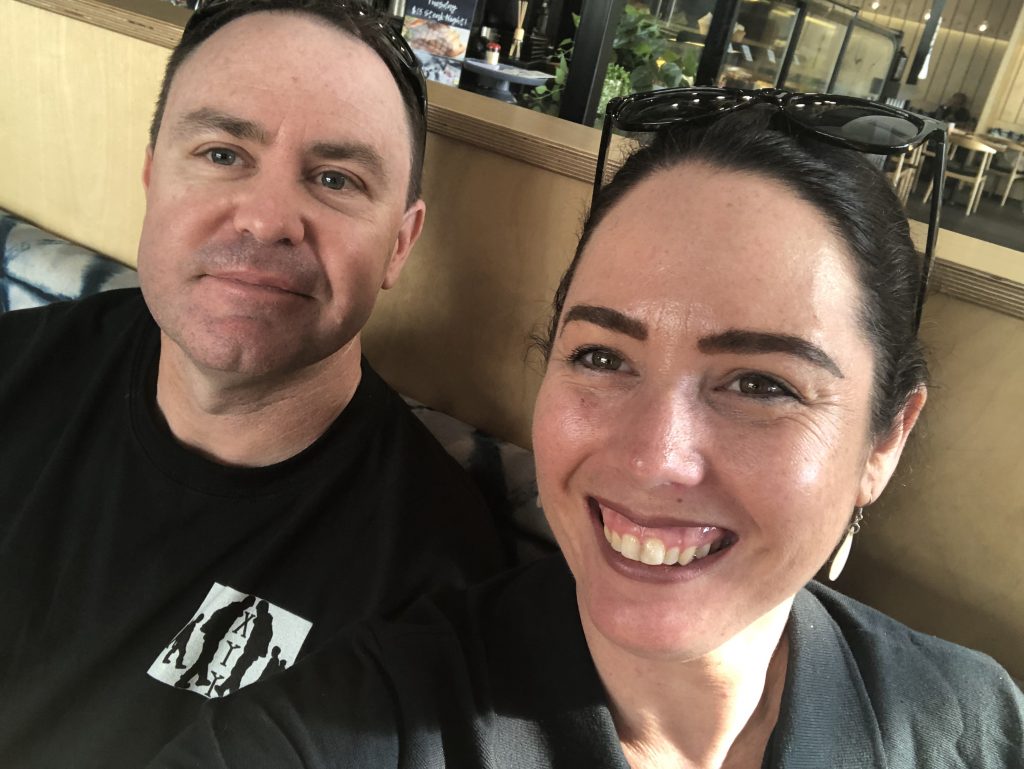
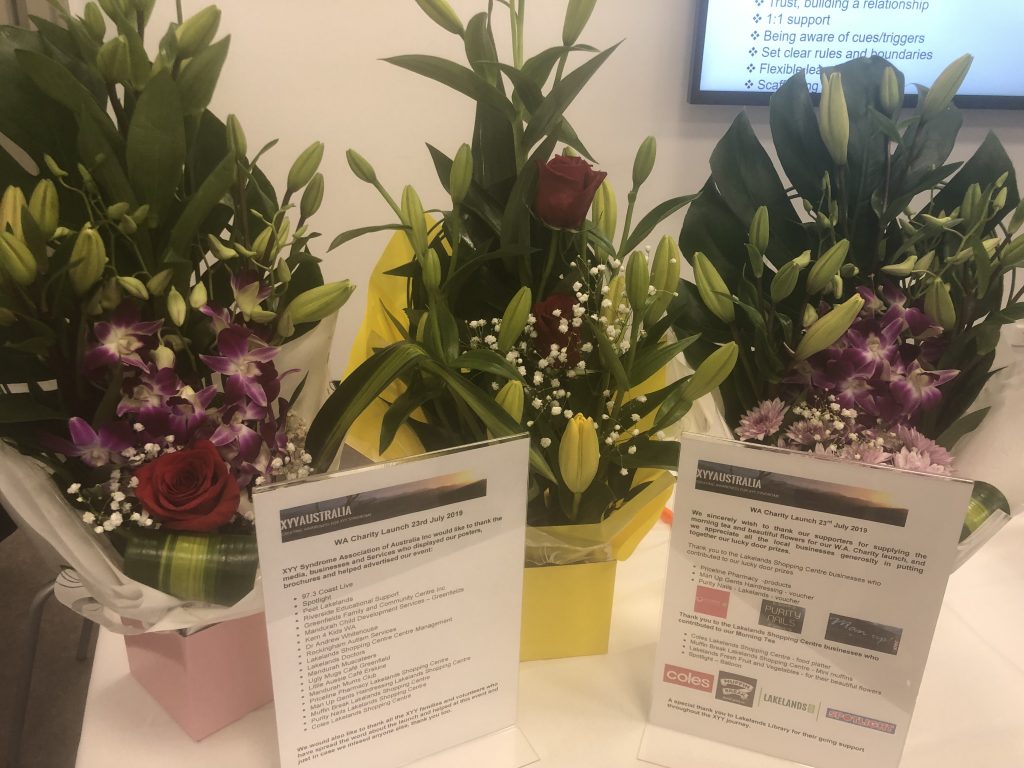
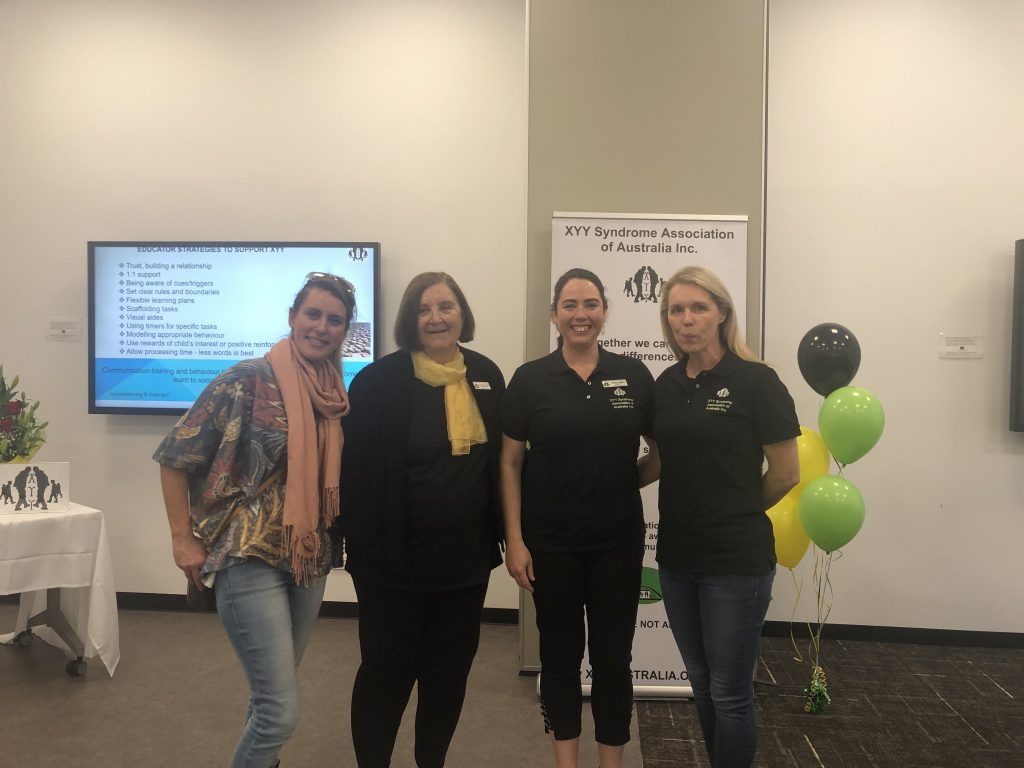
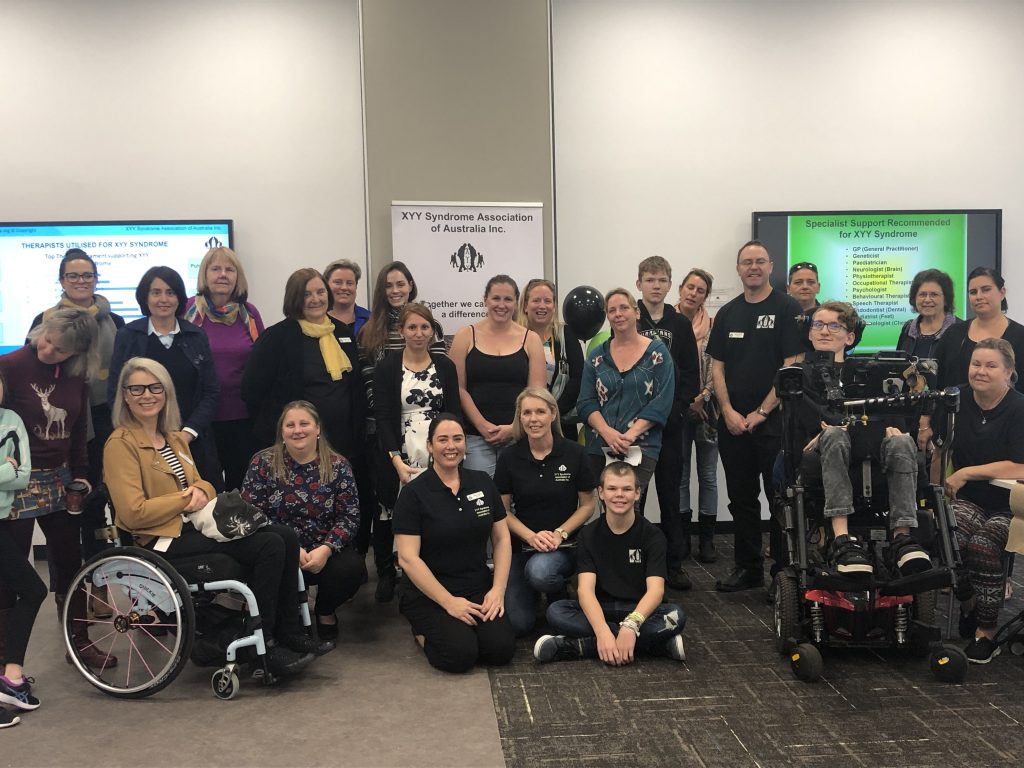
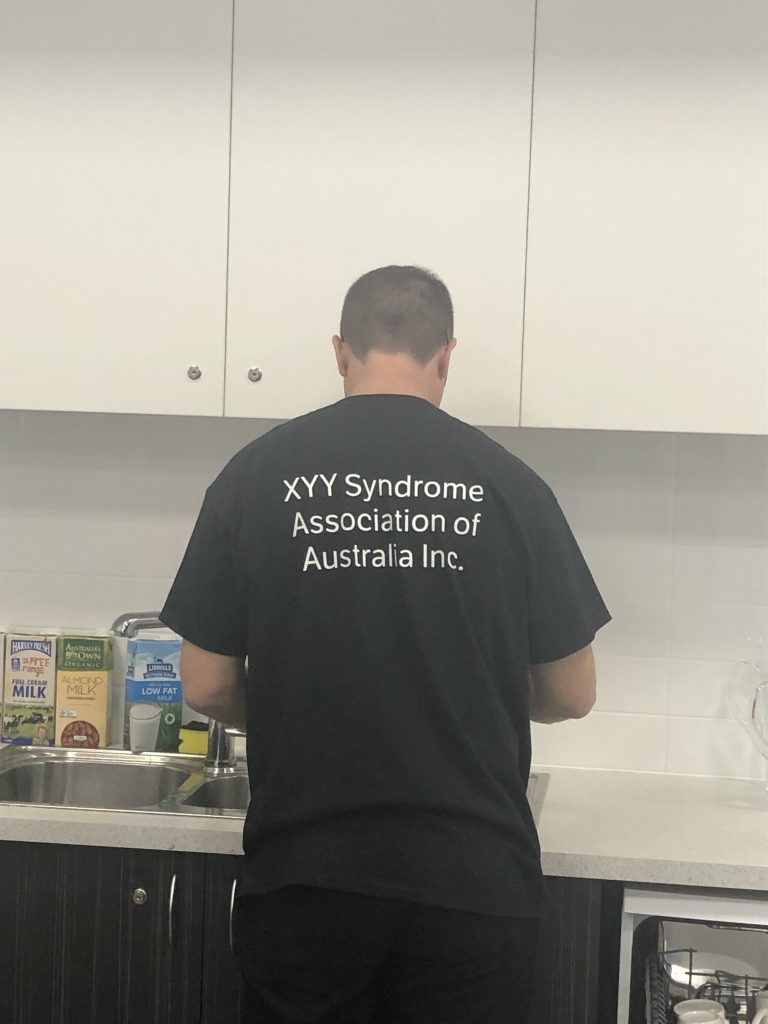
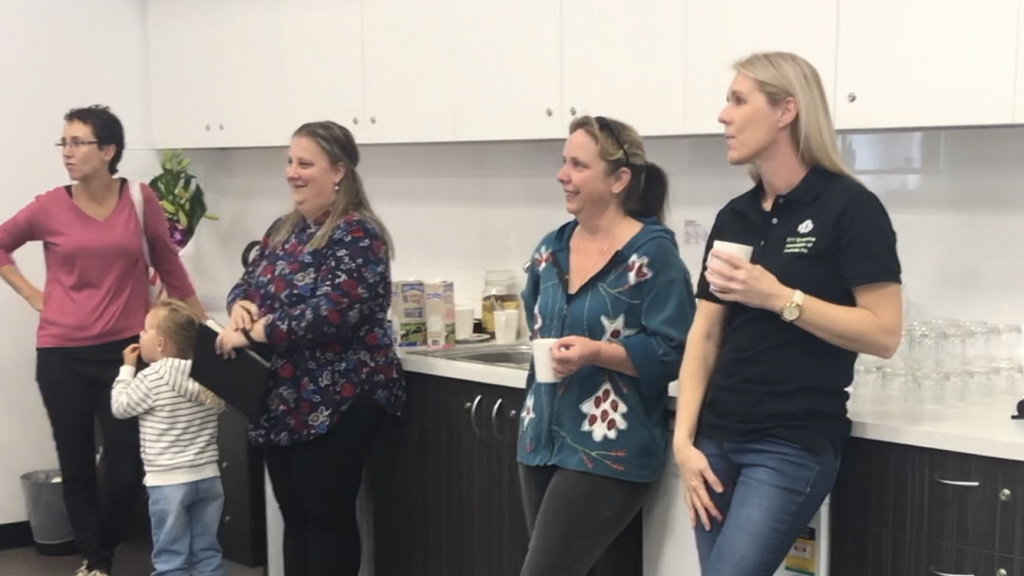
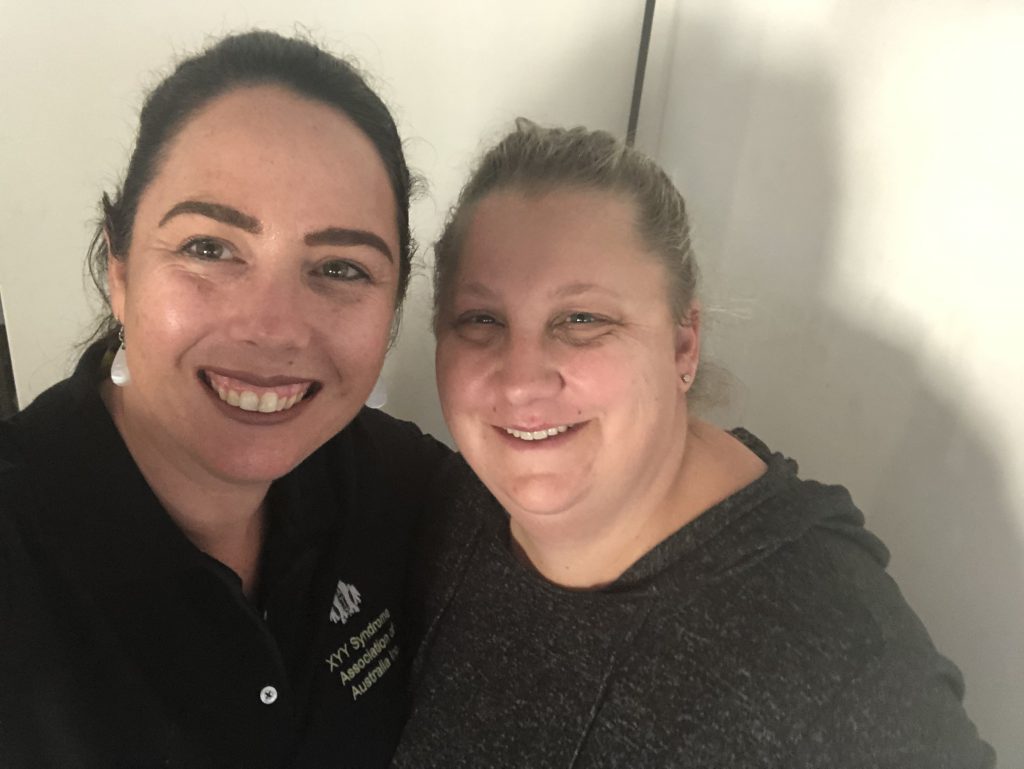
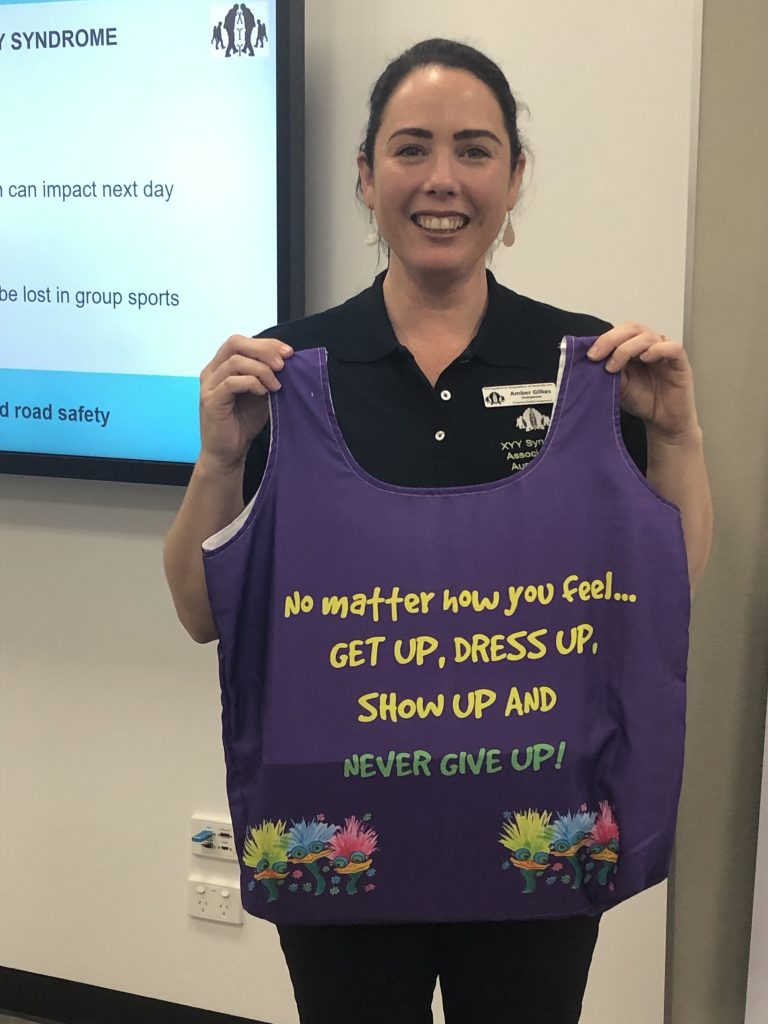
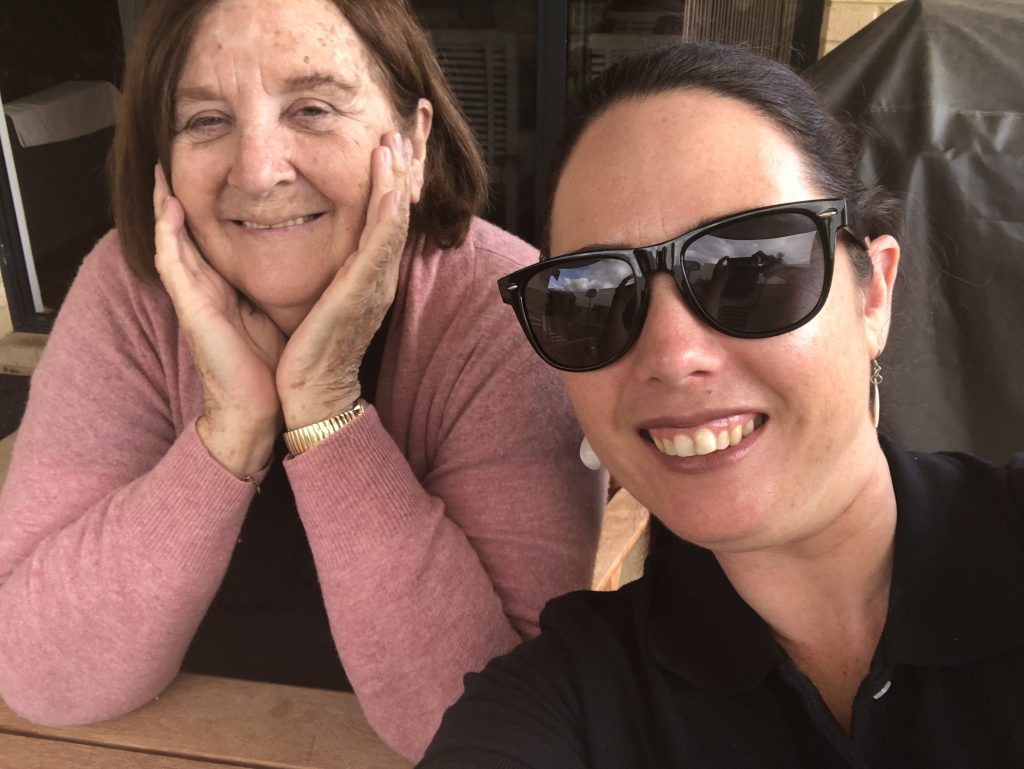
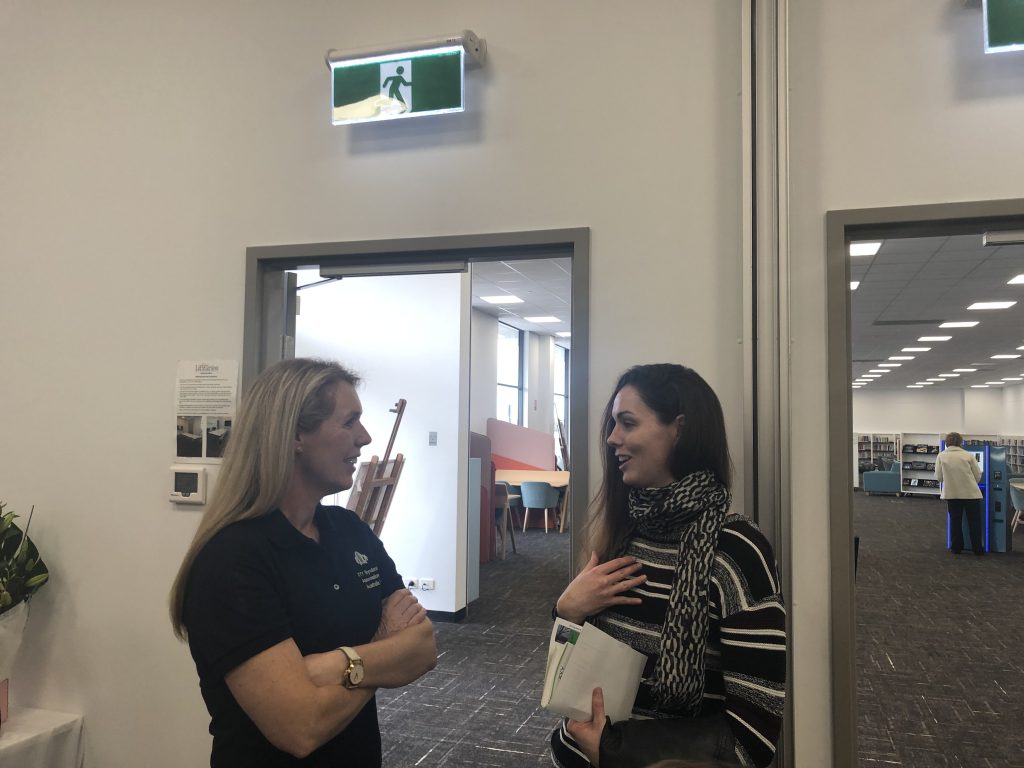
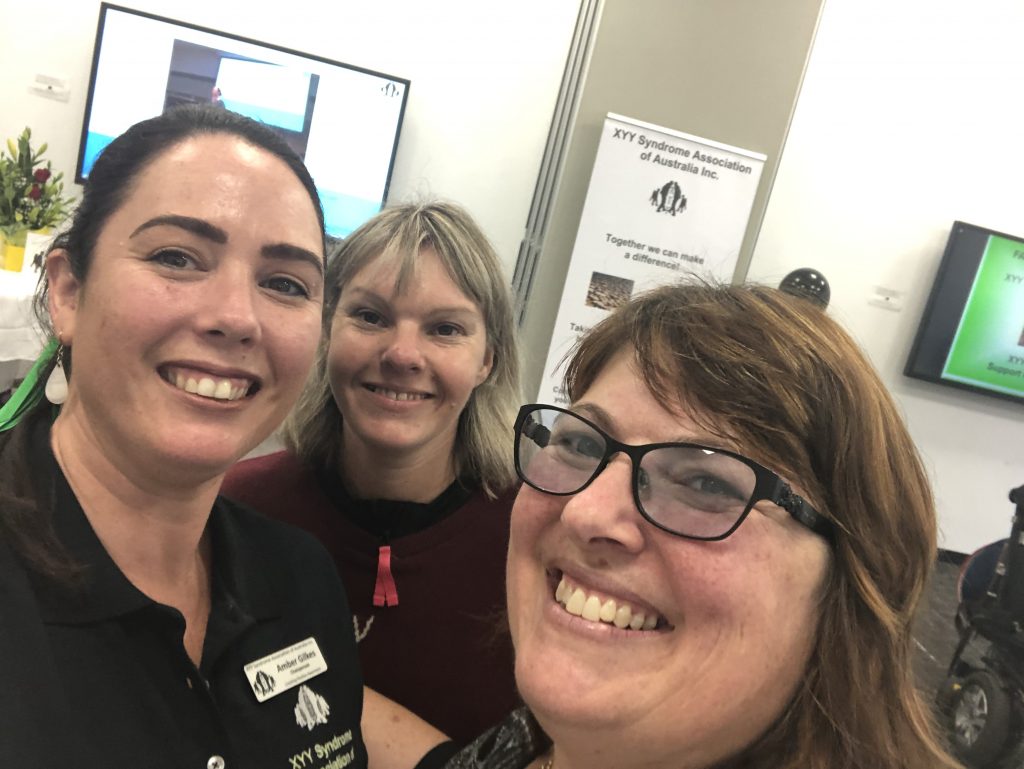
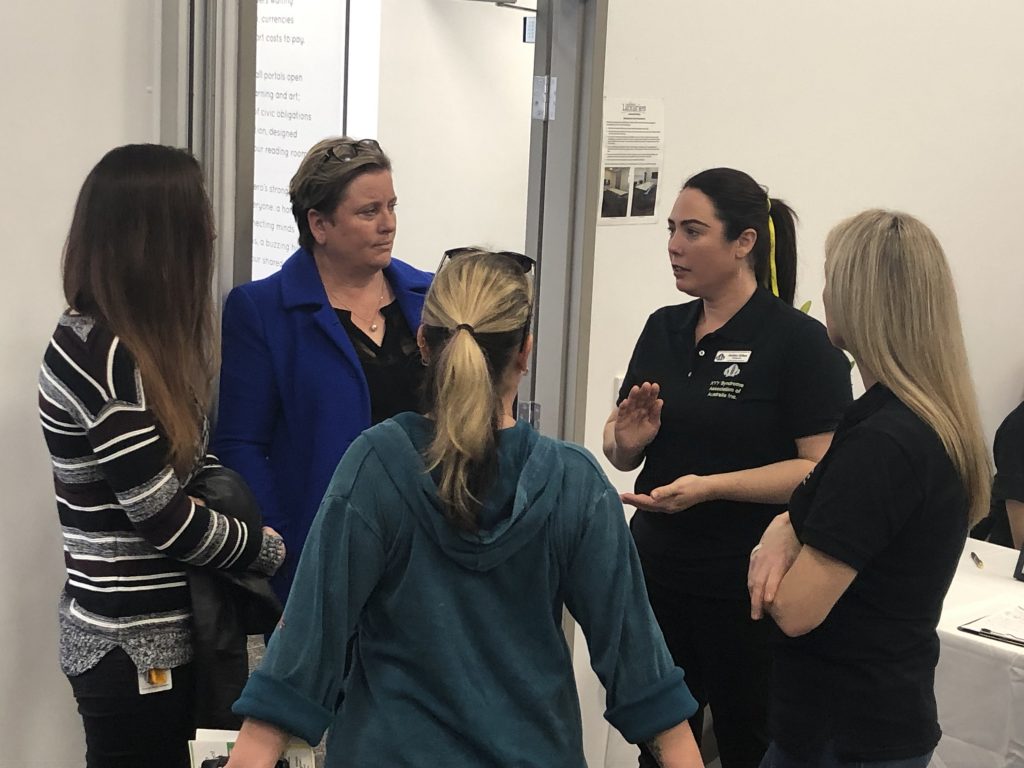
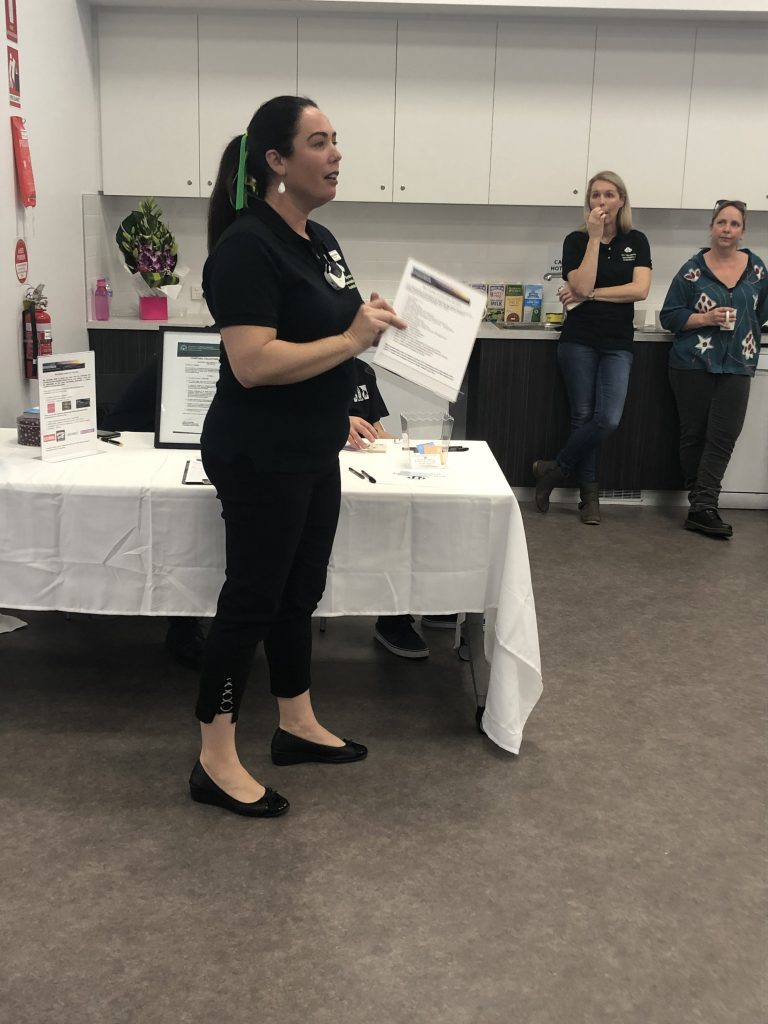
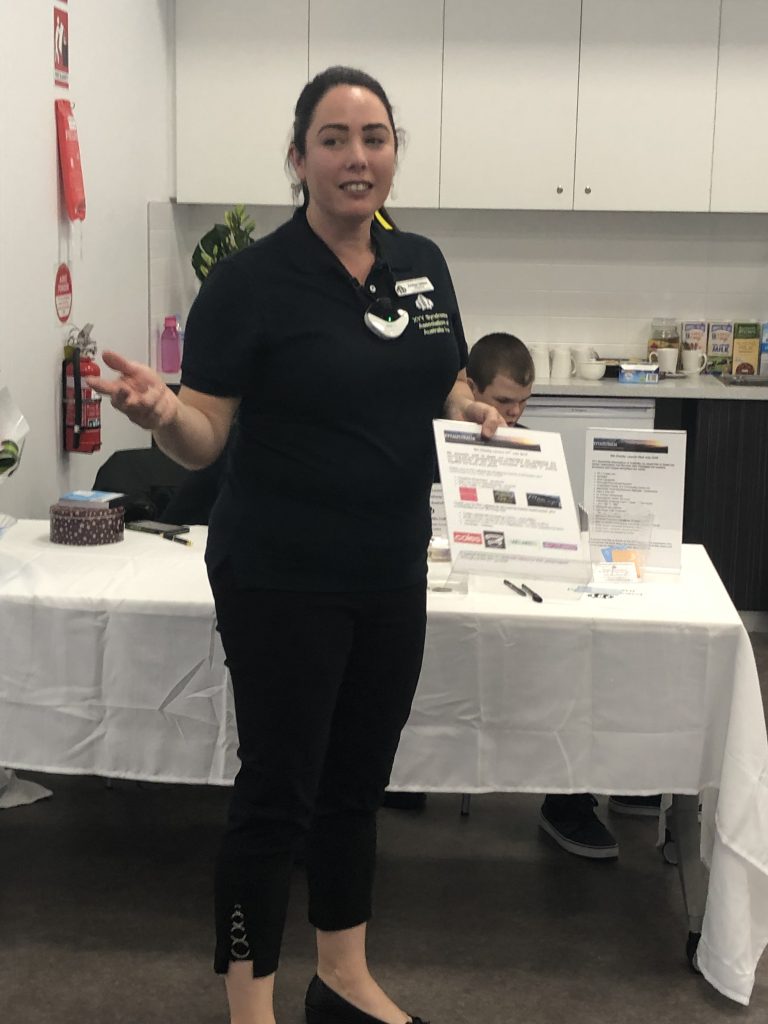
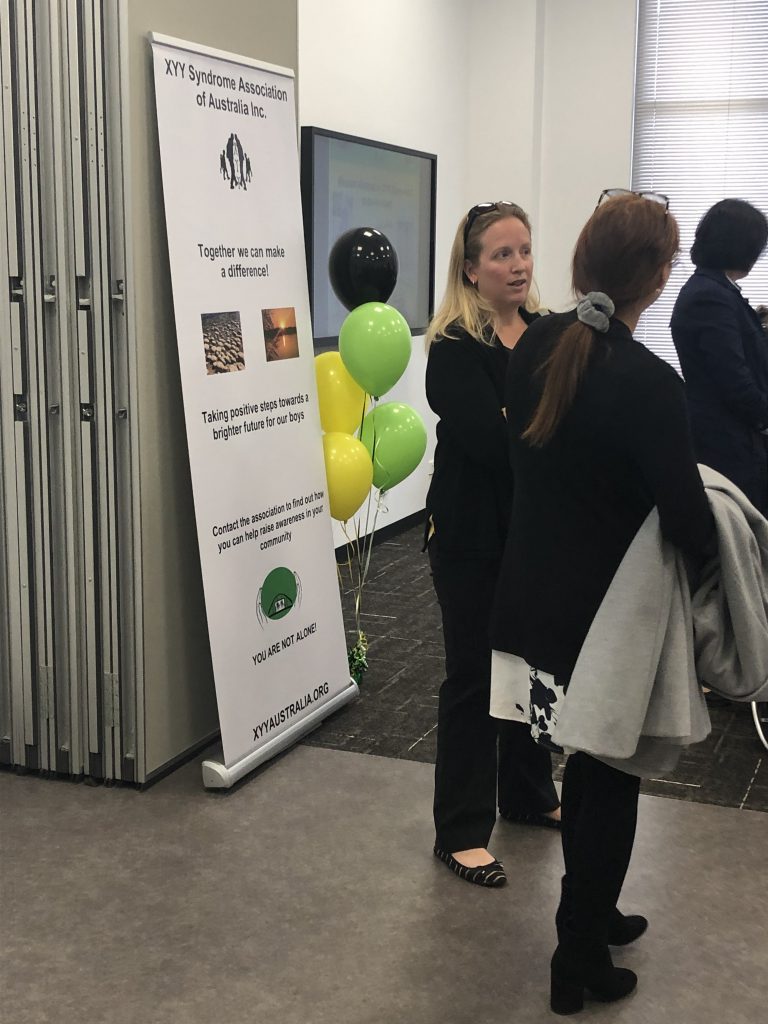
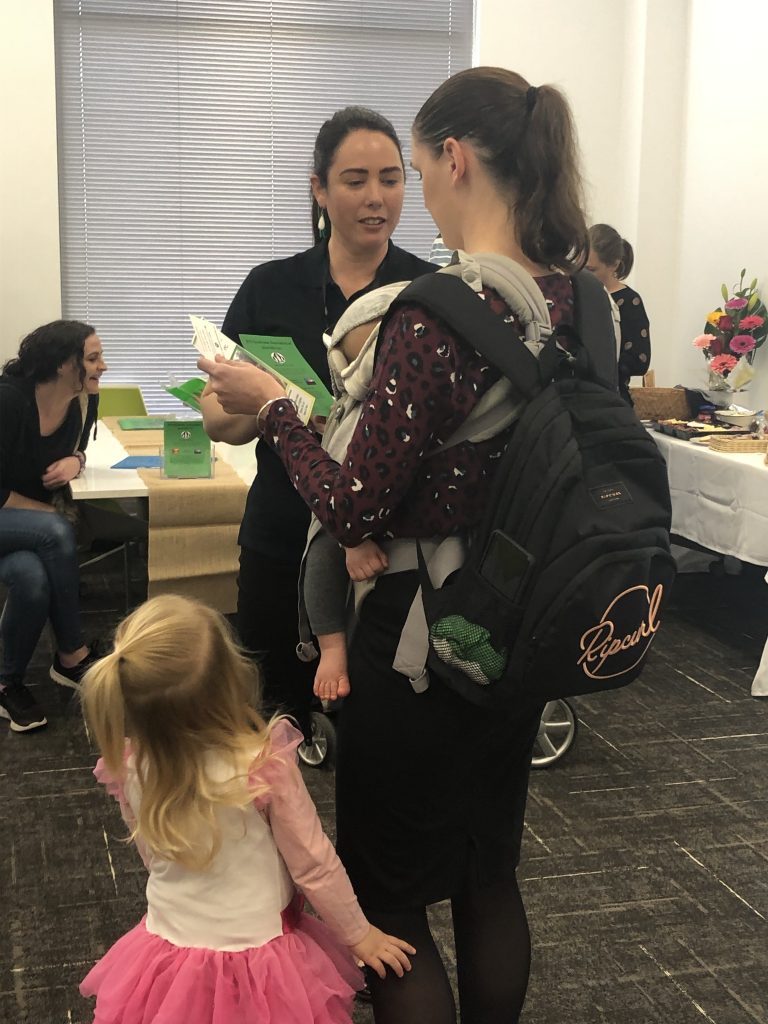
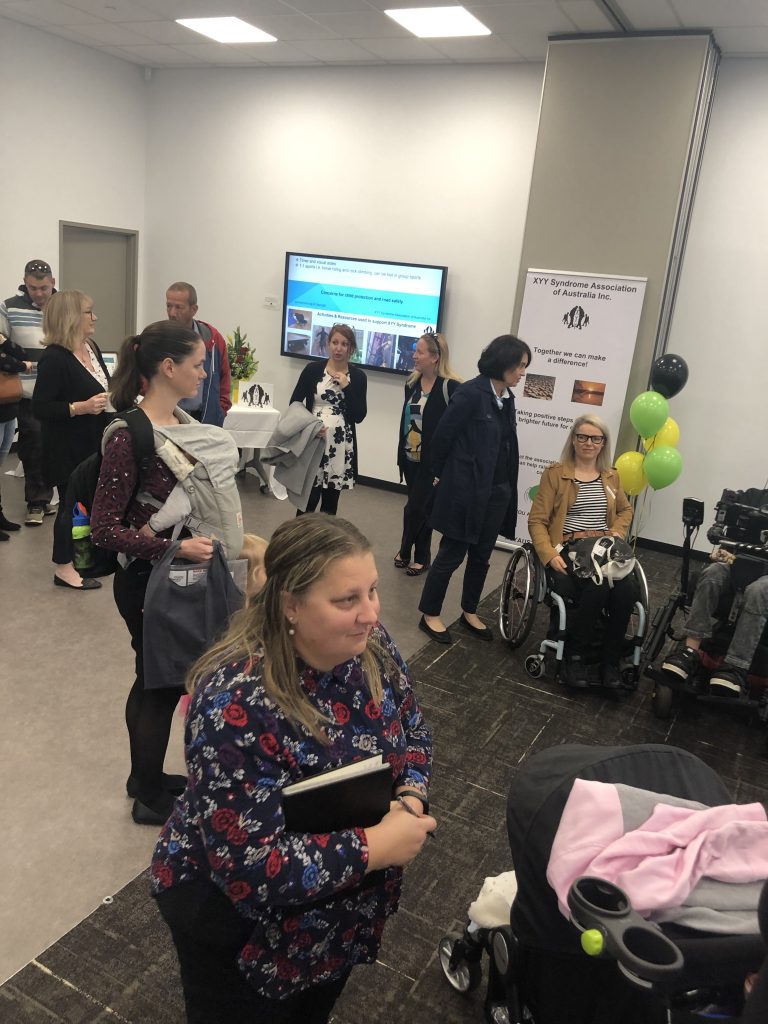
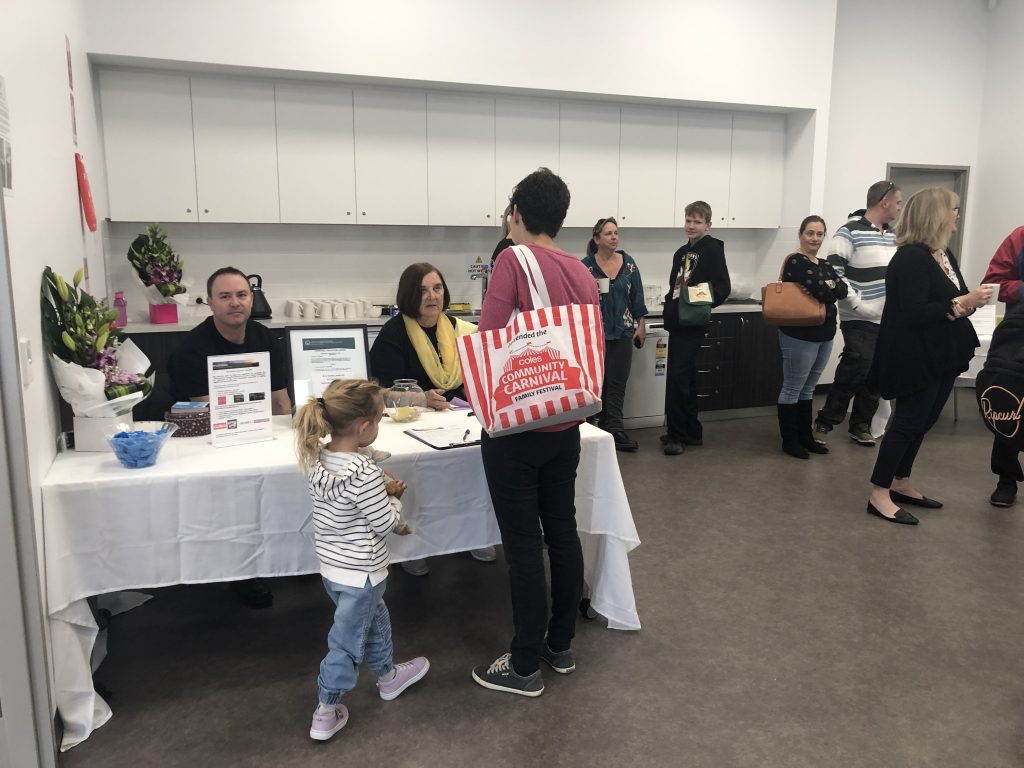
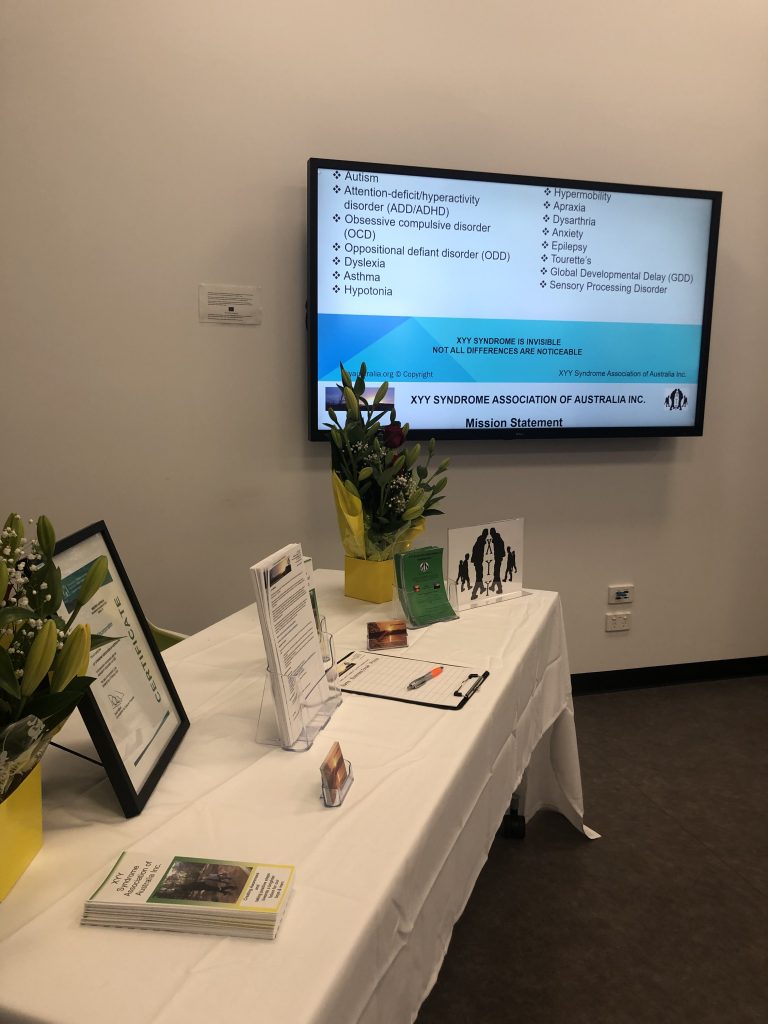
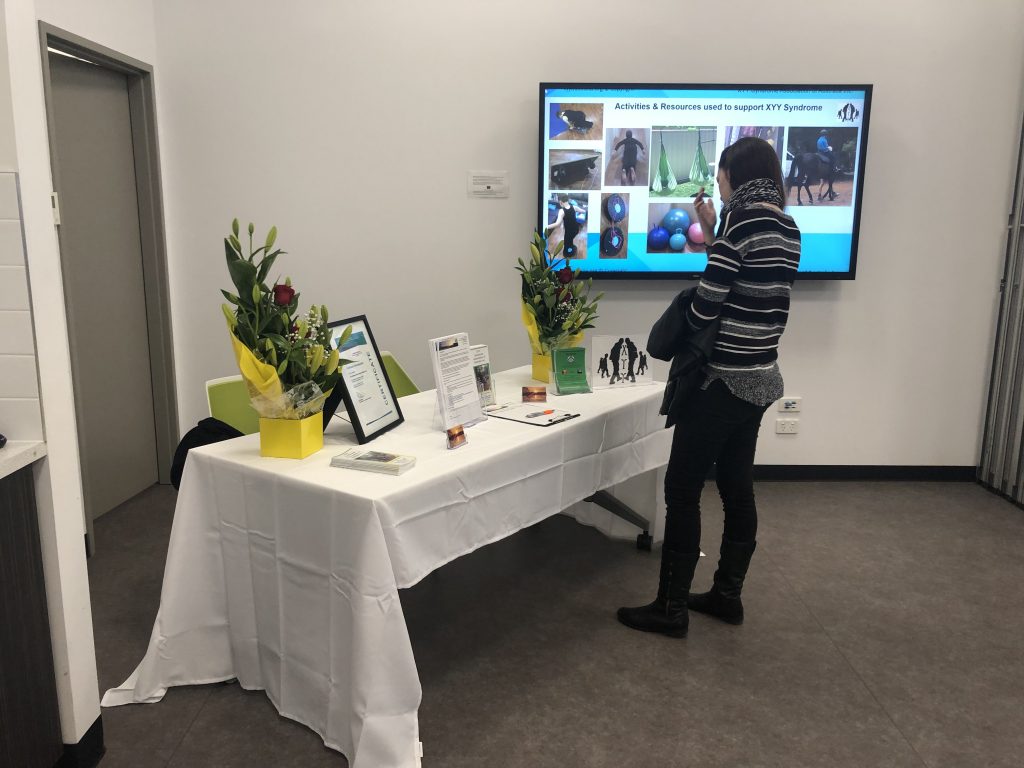
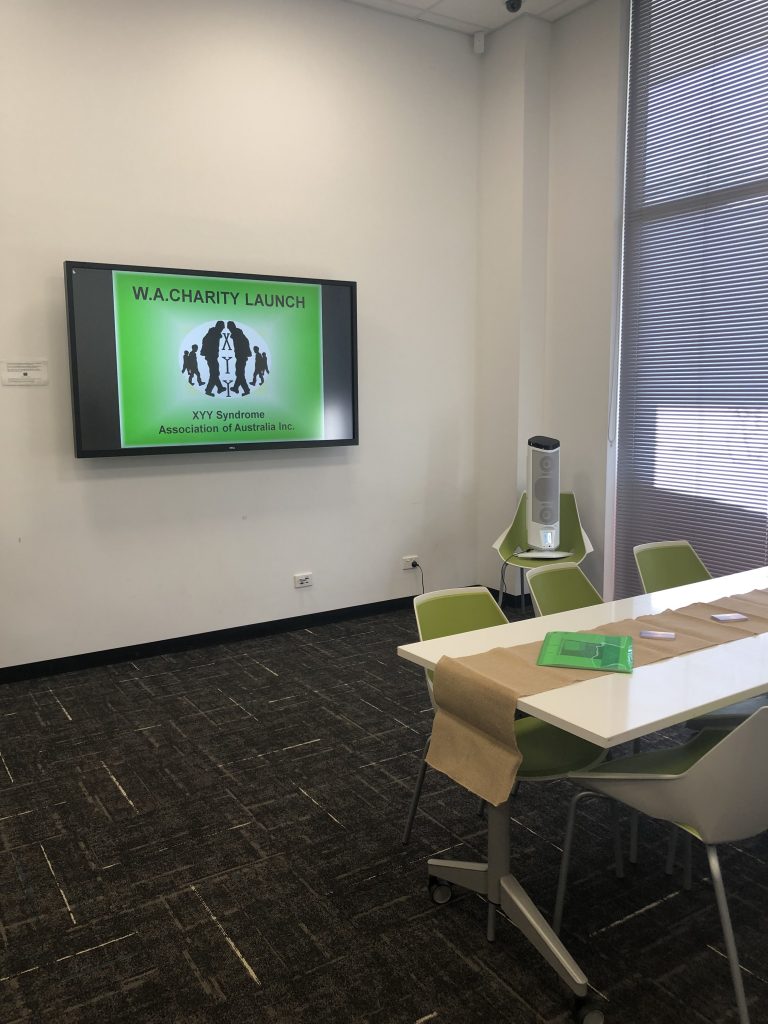
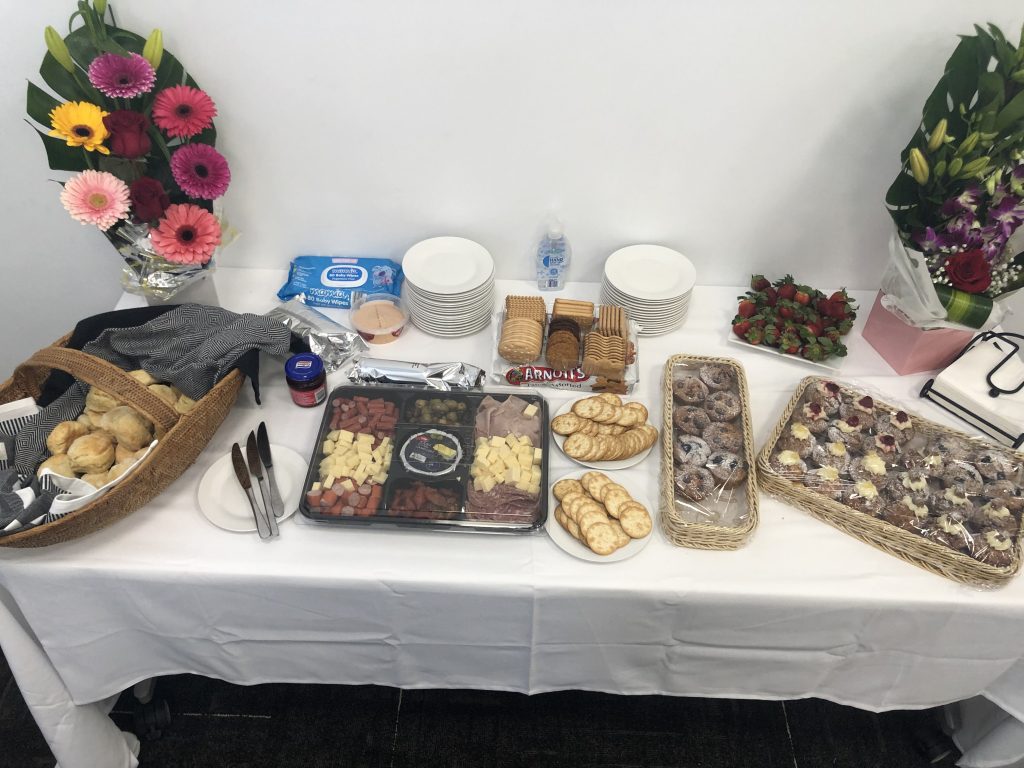
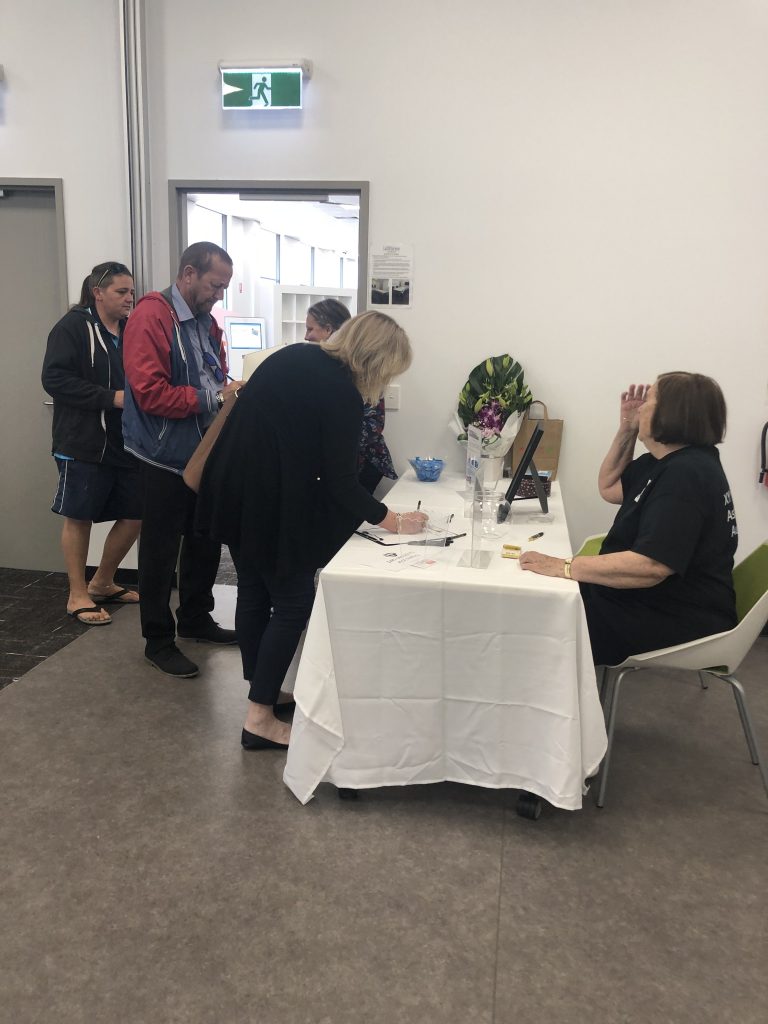
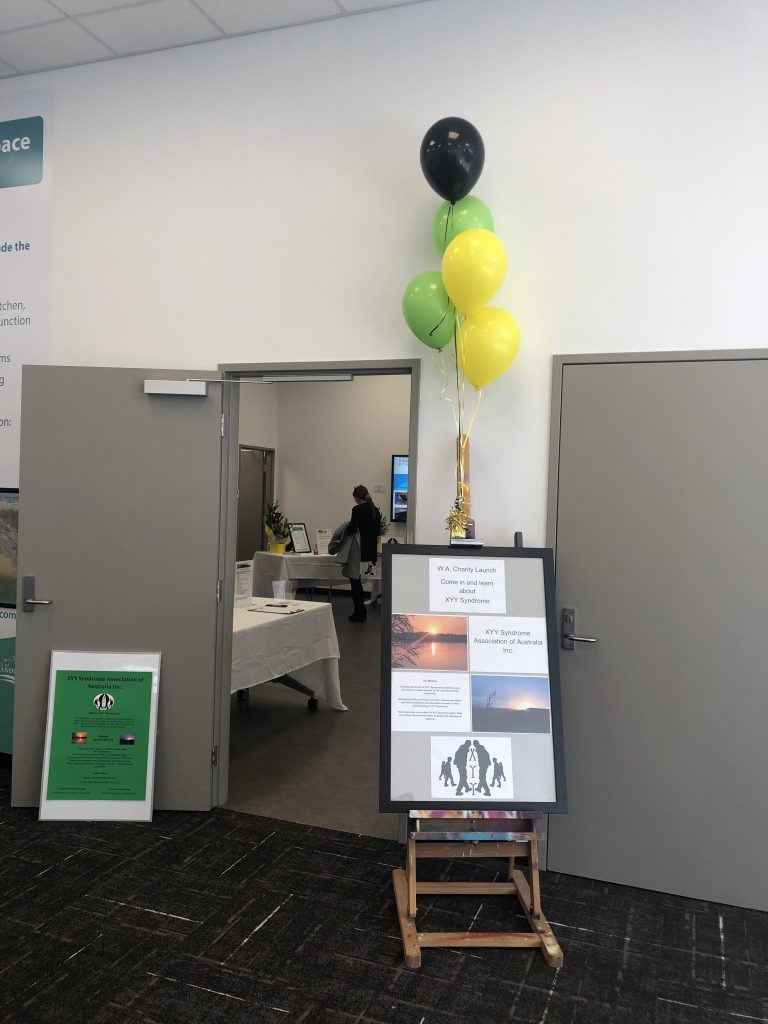



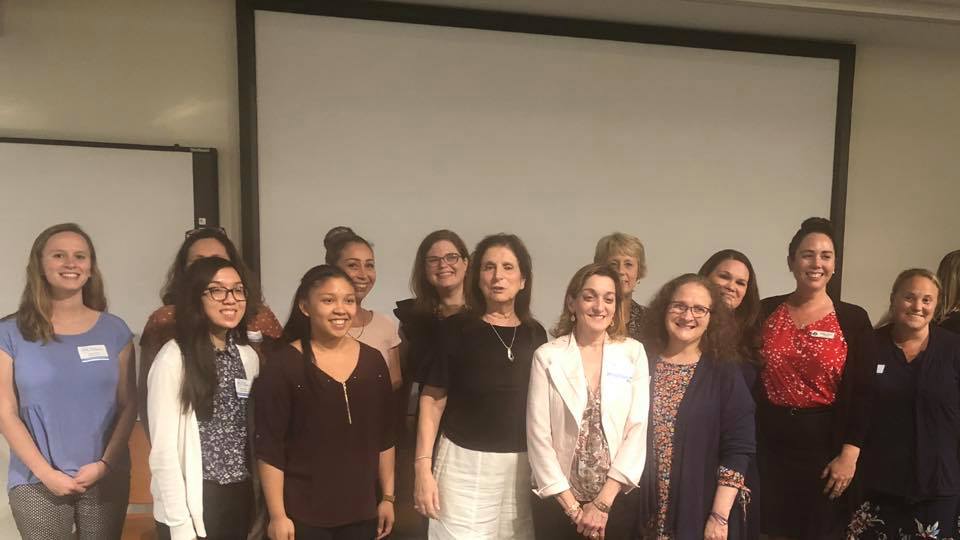
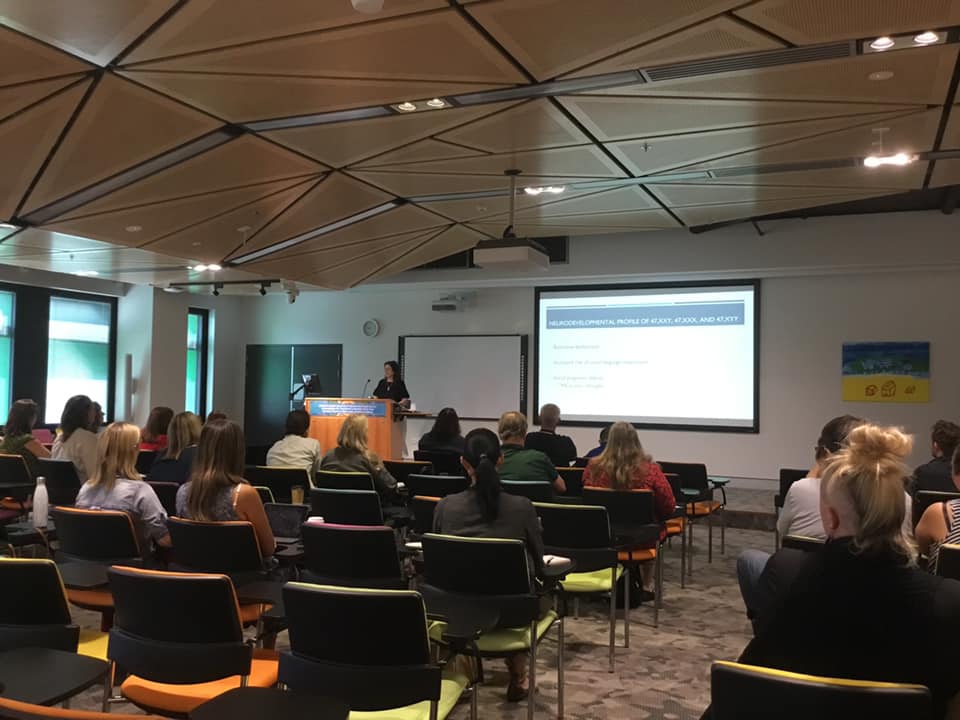
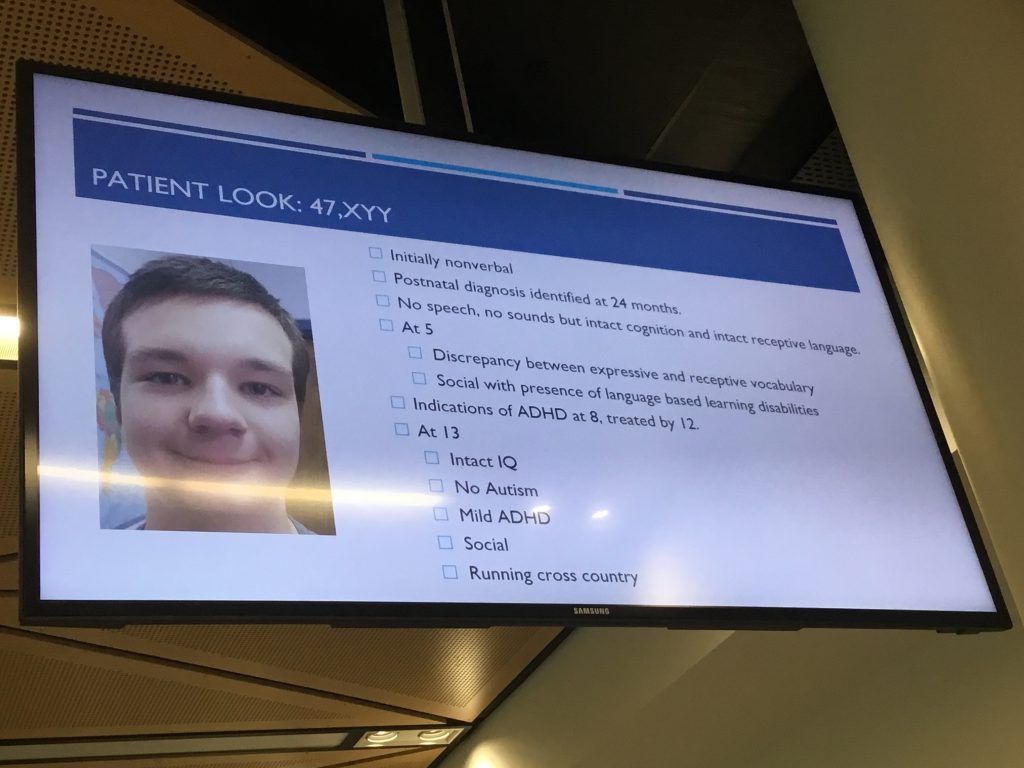
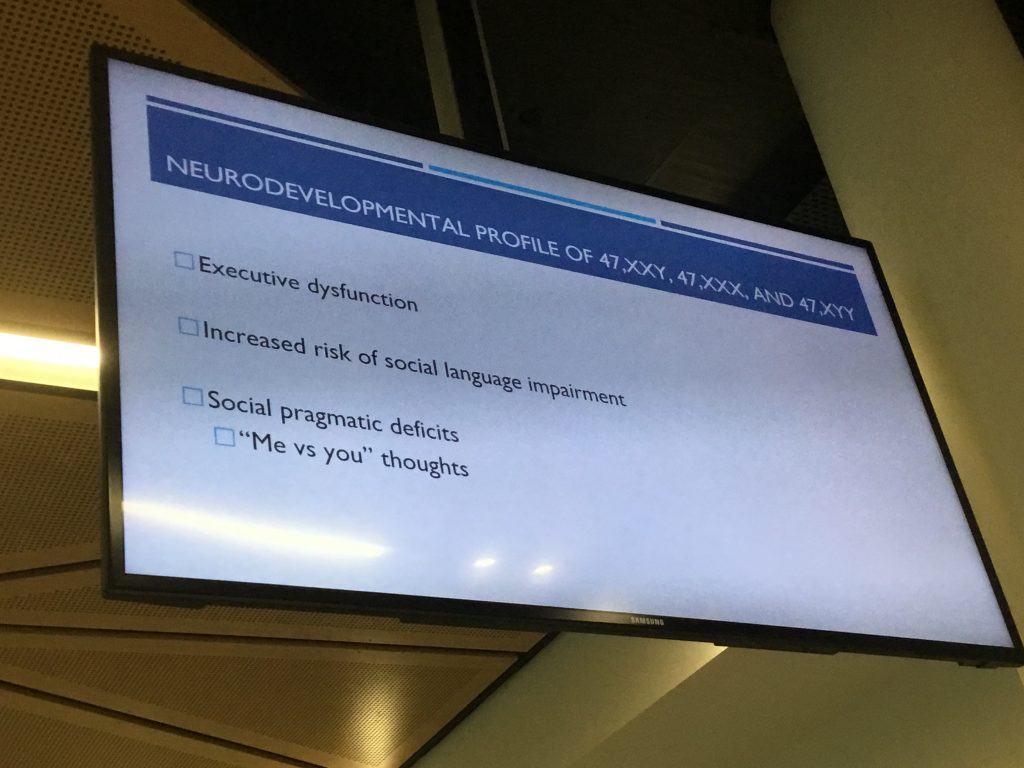
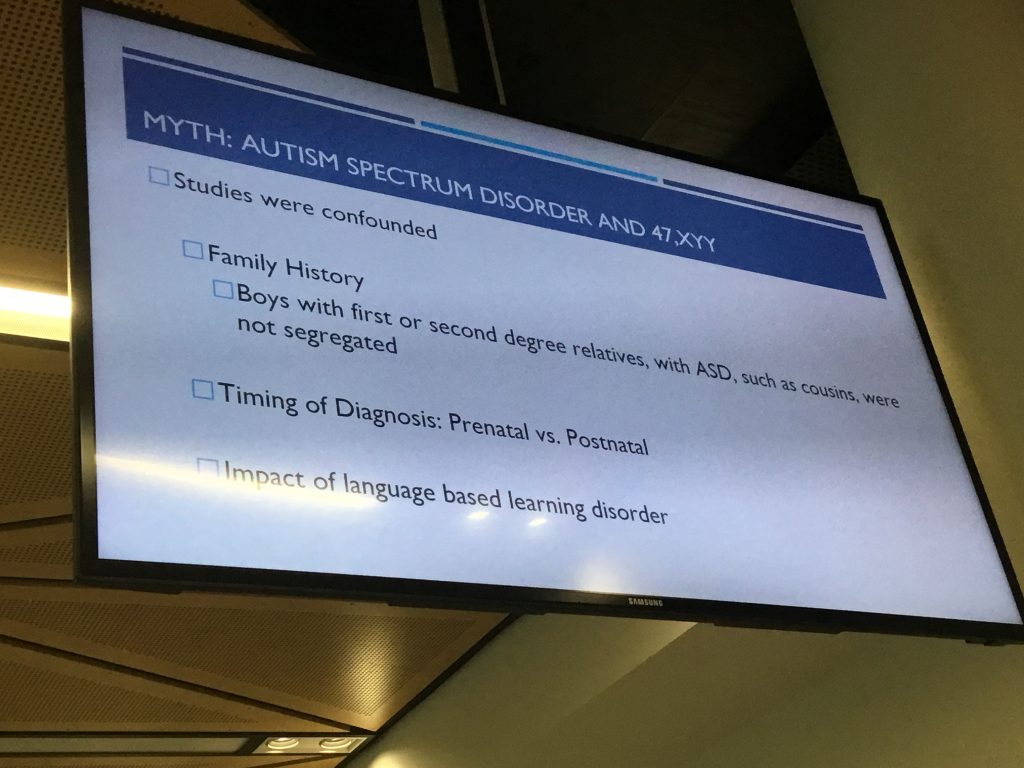
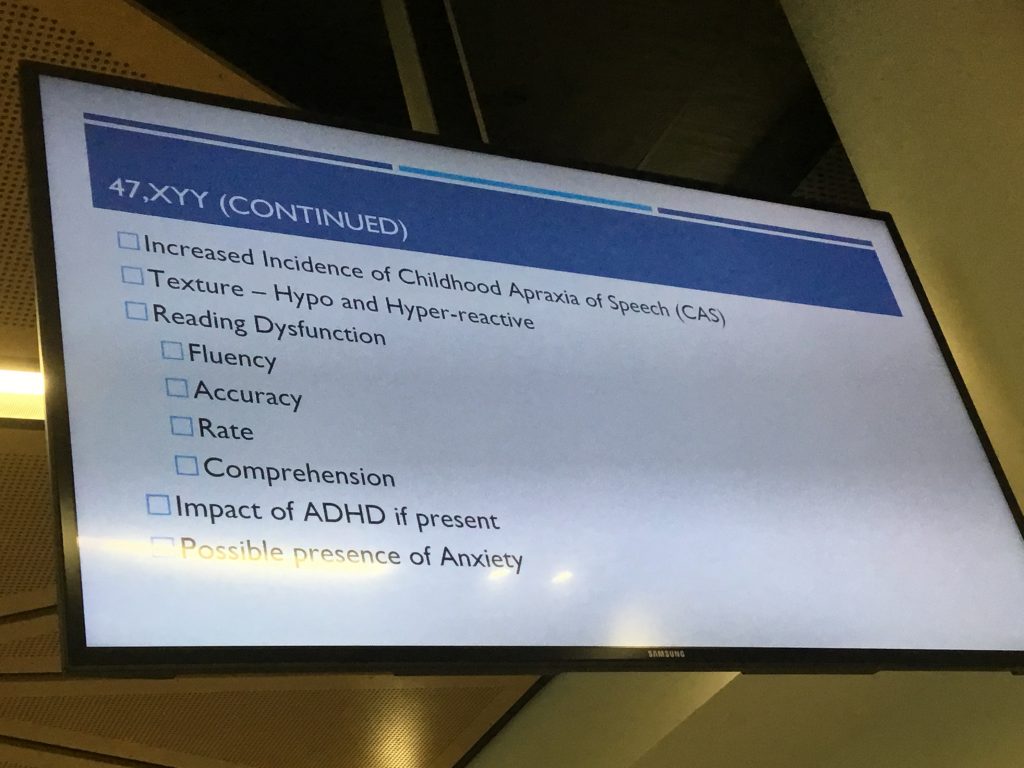
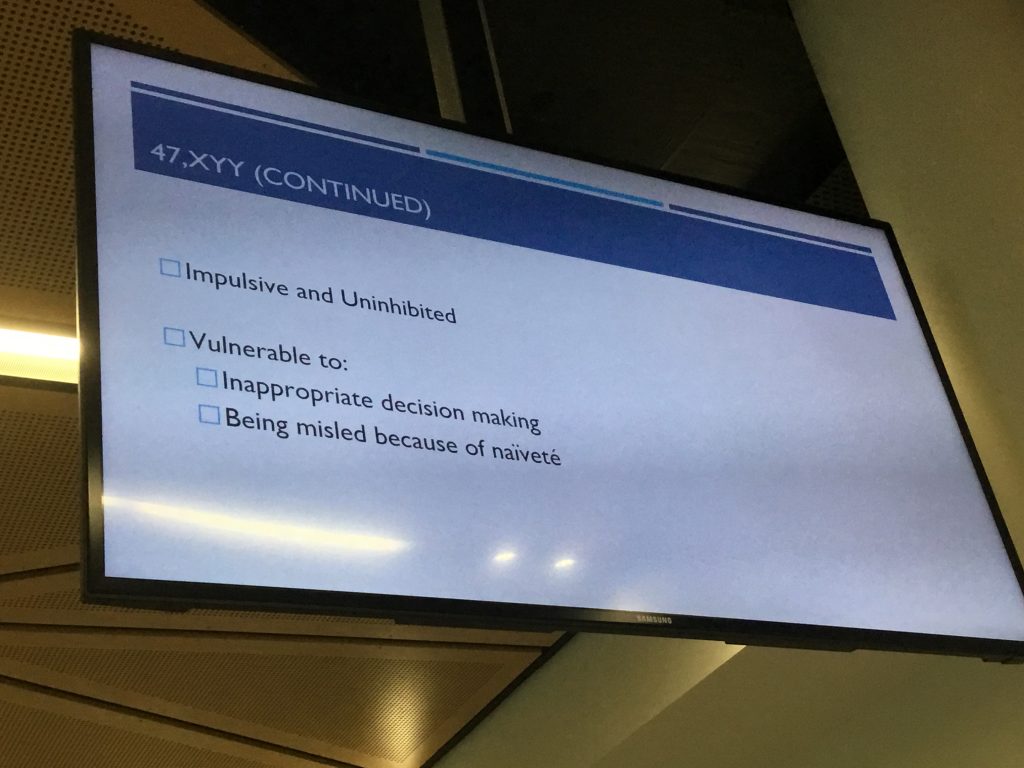
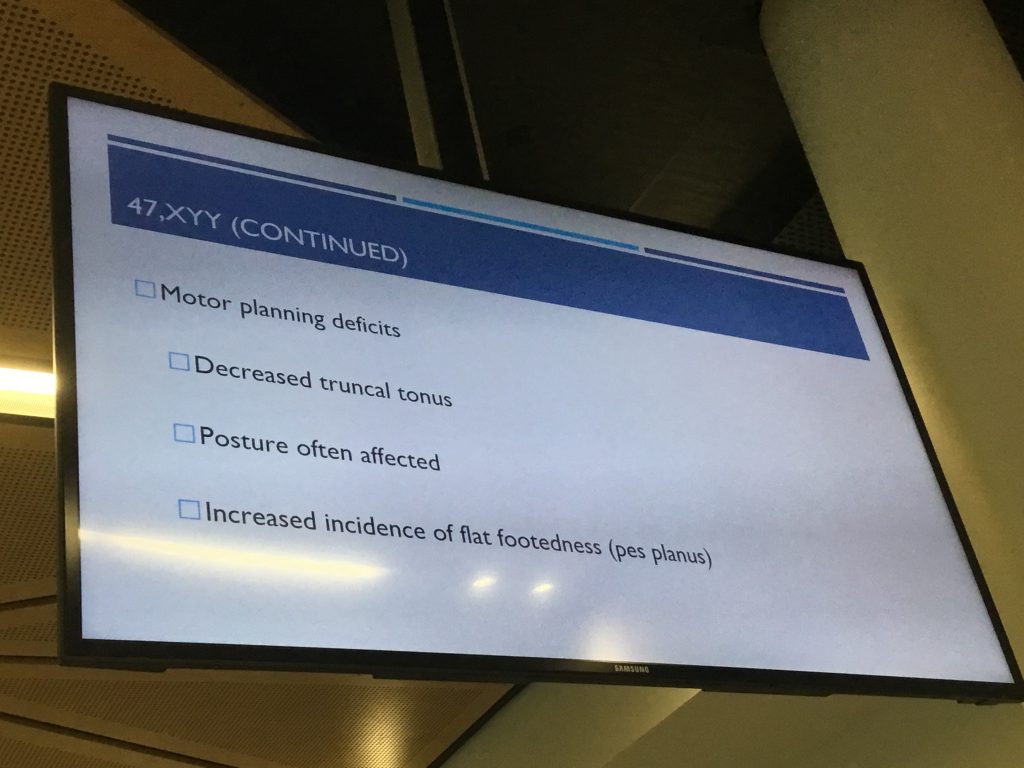
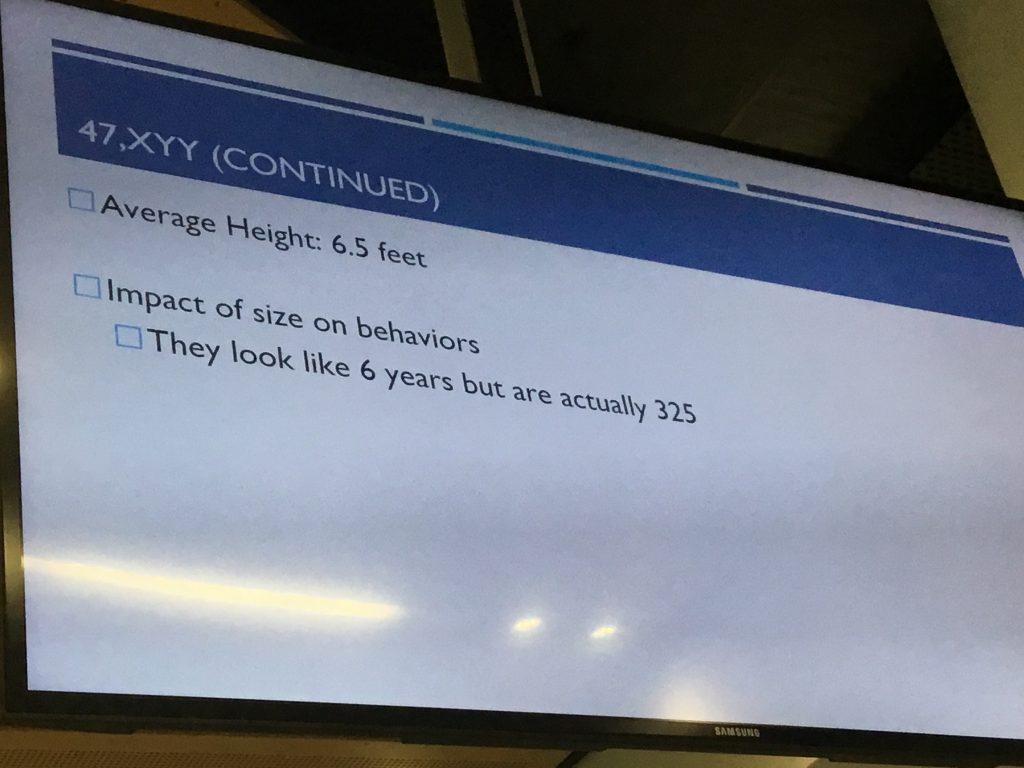
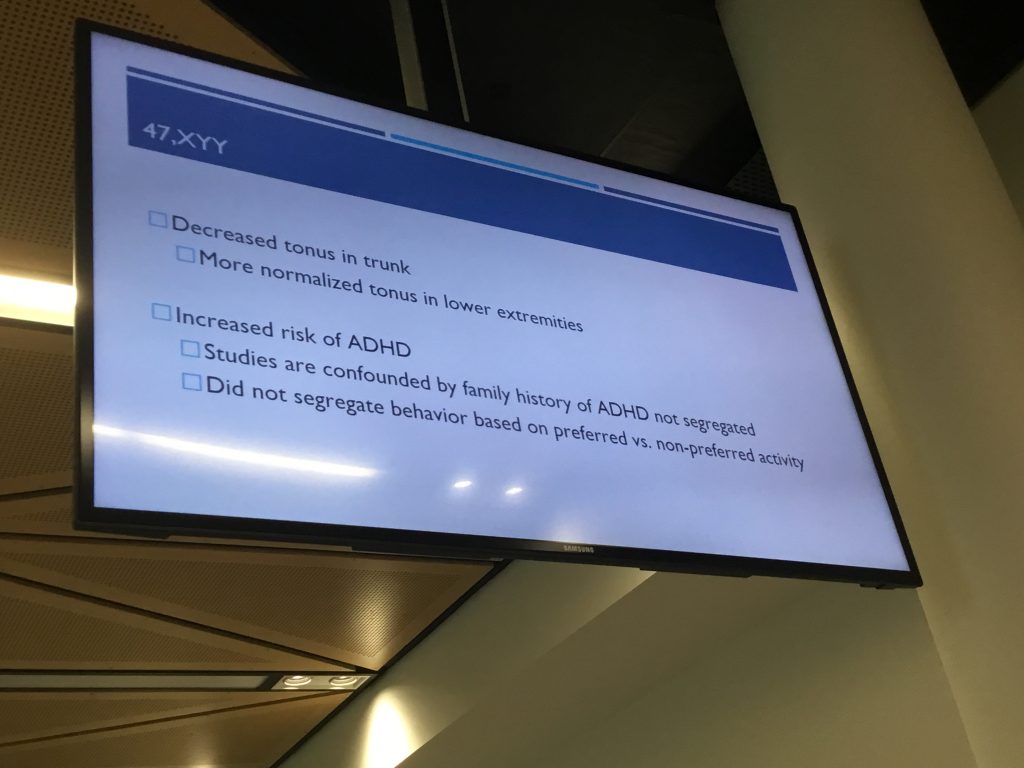

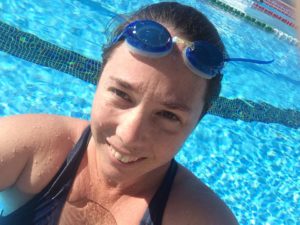
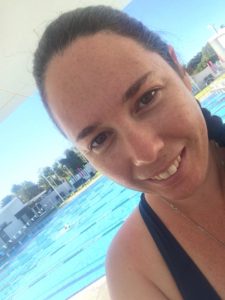
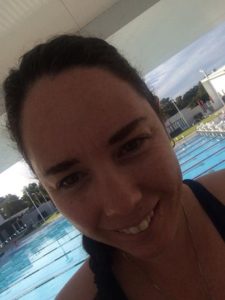 DAY 4: 24th May 2018
DAY 4: 24th May 2018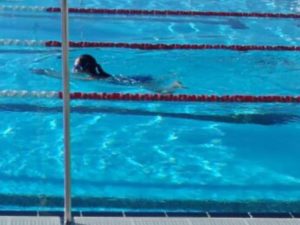 DAY 5: 25th May 2018
DAY 5: 25th May 2018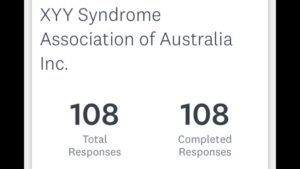 DAY 8: 28th May 2018
DAY 8: 28th May 2018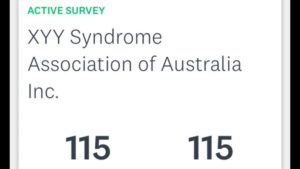 DAY 9: 29th May 2018
DAY 9: 29th May 2018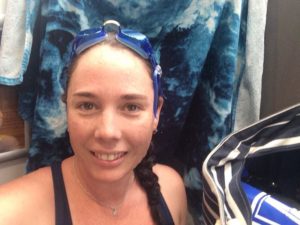 DAY 10: 30th May 2018
DAY 10: 30th May 2018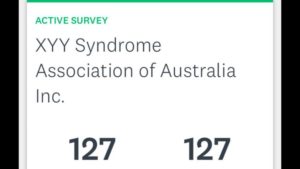 DAY 11: 31st May 2018
DAY 11: 31st May 2018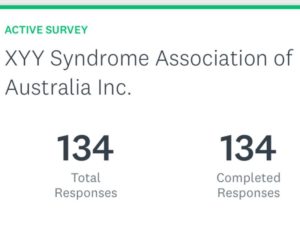 DAY 16: 5th June 2018
DAY 16: 5th June 2018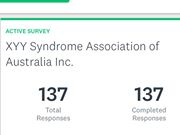 DAY 18: 7th June 2018
DAY 18: 7th June 2018 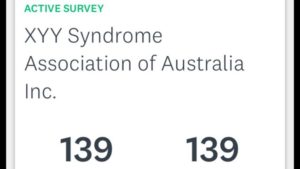 DAY 19: 8th June 2018
DAY 19: 8th June 2018